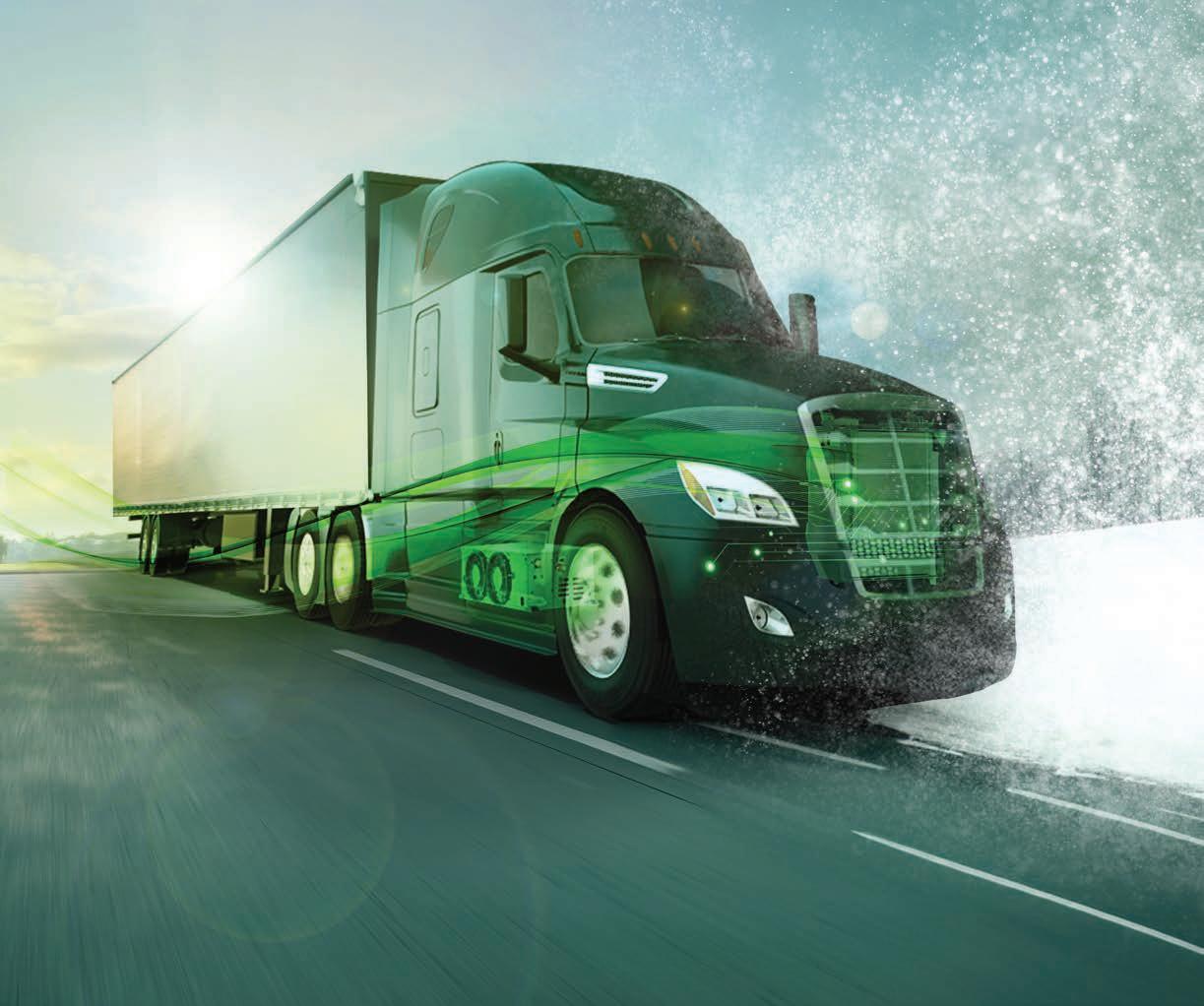

+ Cybersecurity Risks & Regulations in On- & Off-Highway Connectivity PAGE 10 + Autonomous Technologies: Where Are We Now? Examining market demands, product innovations & component testing imperatives POWERTRAIN MARCH/APRIL 2024 oemoffhighway.com PRIORITIES



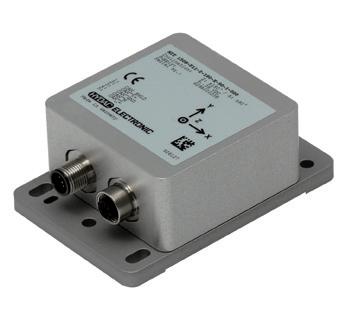
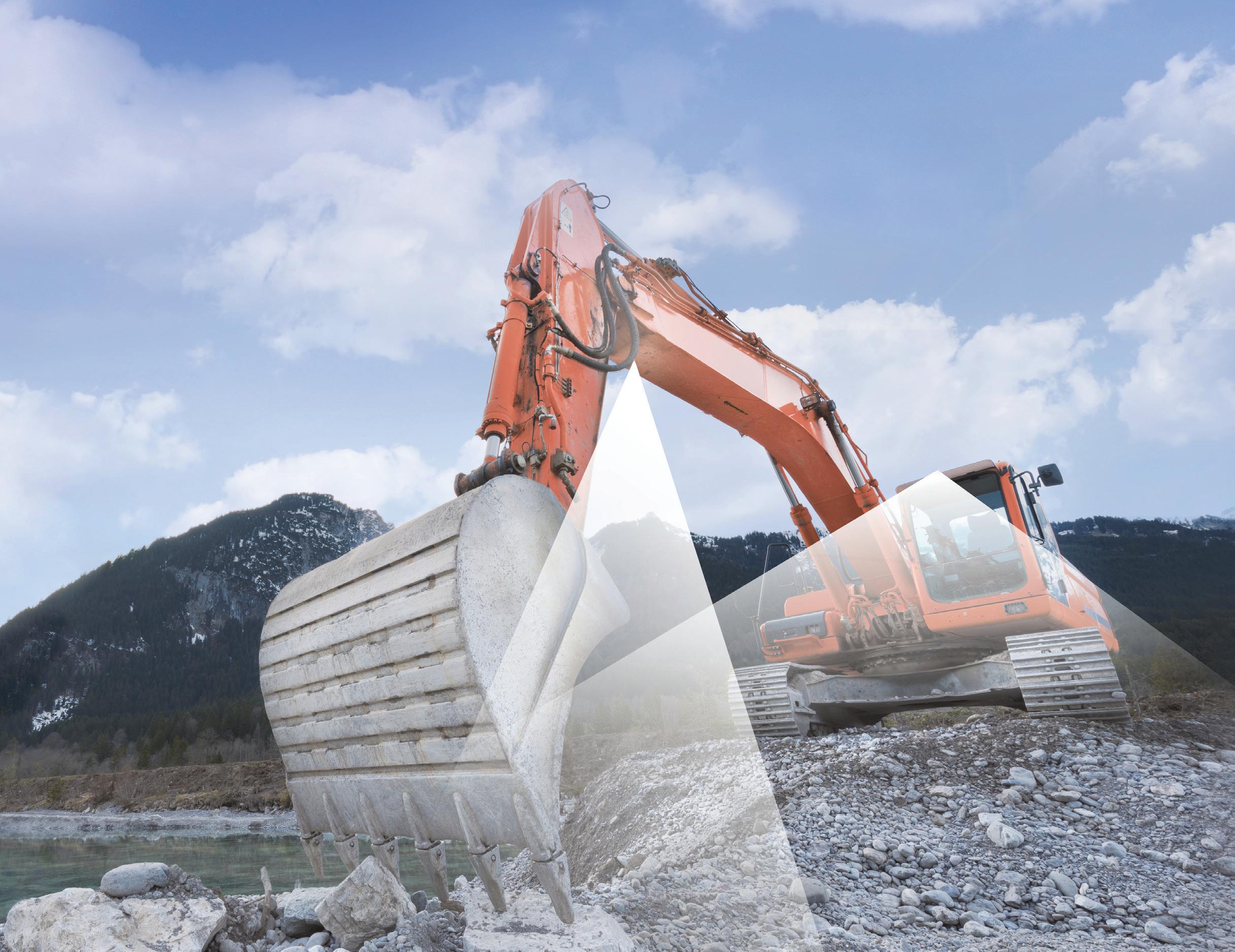








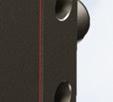





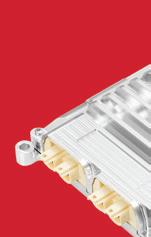





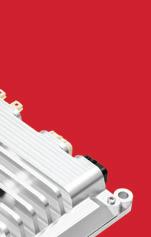


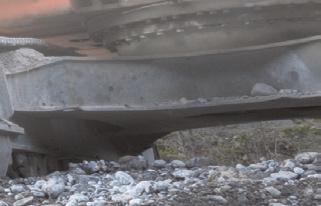

•
•
Vision 3 Series Display
•
•
•


HYDAC Ethernet Cameras
•
• Reliable image display, even under extreme conditions
• Best image quality and a broad selection of fields of vision
HYDAC Position Sensors
•








HYD2402-2441 Lifting mobile machinery to the next technological level
Multi-Purpose Computing Unit
Fusion
• AI accelerator to enable edge AI applications
Connect up to four displays simultaneously
Possible use as central machine gateway
High computational and graphical multimedia processing power
Customizability and clear data visualization for advanced usability
Slim and flexible design suitable for modern operator cabins
Enhanced safety with HYDAC assistance systems
Vision 3 Series Display Fusion Computing Platform Ethernet Camera HVT1000
Linear, angle and inclination – are key components in machine automation HYDAC.com/en-us ttcontrol.com

EDITOR'S NOTE
4 Work Truck Week & OEM Off-Highway's 2024 Engine Spec Guide
NEWS BRIEF
5 4 new partnerships bringing technology integration to the forefront
EQUIPMENT MARKET OUTLOOK
6 US mining production is up year over year, rising at a slowing pace
NEW PRODUCTS
32 8 innovative new releases hitting the OEM market now
OFF-HIGHWAY HEROES
34 Stroud Road Machinery Company's 1931 conveyor design components & complications
WEB EXCLUSIVES
Video Network
oemoffhighway.com/videos
OEM Industry Update
oemoffhighway.com/podcasts
Premium Content
oemoffhighway.com/premium-content

FEATURE SERIES: POWERTRAINS
18 Powertrain Priorities
Inside off-highway power trends & the shape of the market today
20 Exploring the ICE Age
Alternative fuels, emissions & the future of the internal combustion engine
22 4 Keys to Efficient Driveline & Component Testing
Hybrid & EV powertrains & the testing tech designed to improve performance
CONSULTANT CORNER
10 The Road to Autonomy
Market conditions & the path forward for on- & off-road driverless technologies
ELECTRONICS & ELECTRIFICATION
14 Agriculture’s Merge Into the New Road Safety
Connected capabilities of V2X technologies & the need for standardization
TECHNOLOGY NEWS
16 For HD Hyundai, the Future Is in Xite
A glimpse into construction jobsite transformation with XiteSolution President & CEO Youngcheul Cho
CAMERA SYSTEMS
26 What’s Next for Advanced Vehicle Safety Solutions?
The challenges of AI in onboard cameras, object detection & risk reduction
CONNECTIVITY
28 Cybersecurity Challenges for Connected Vehicles
Trends, risks & regulatory environments in both on- & off-highway connectivity
TRENDS IN THE CAB
30 Operator Cockpit Designs Impact End-User Efficiency
From comfort and ergonomics to cutting-edge technology, the cab is becoming a key differentiator


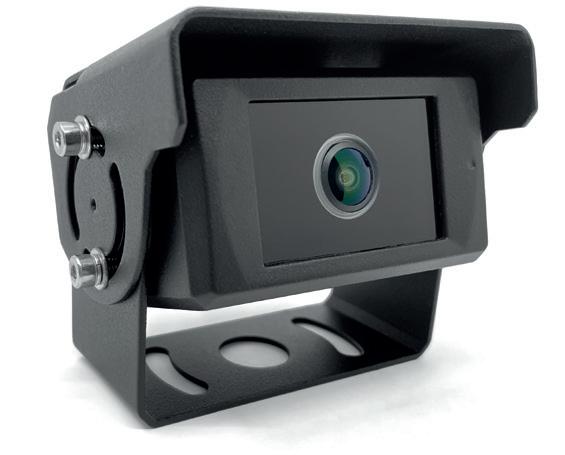
3 OEM Off-Highway | MARCH/APRIL 2024 CONTENTS VOLUME 42, NO. 02 | MARCH/APRIL 2024 10 26 30 18 14

As this issue goes to print, the OEM Off-Highway team is returning from Indianapolis, Indiana, where we spent the week tracking commercial truck trends at Work Truck Week 2024.

The event provides commercial vehicle industry professionals with access to the latest trucks, components and attachments alongside some of the industry’s newest technologies and solutions.


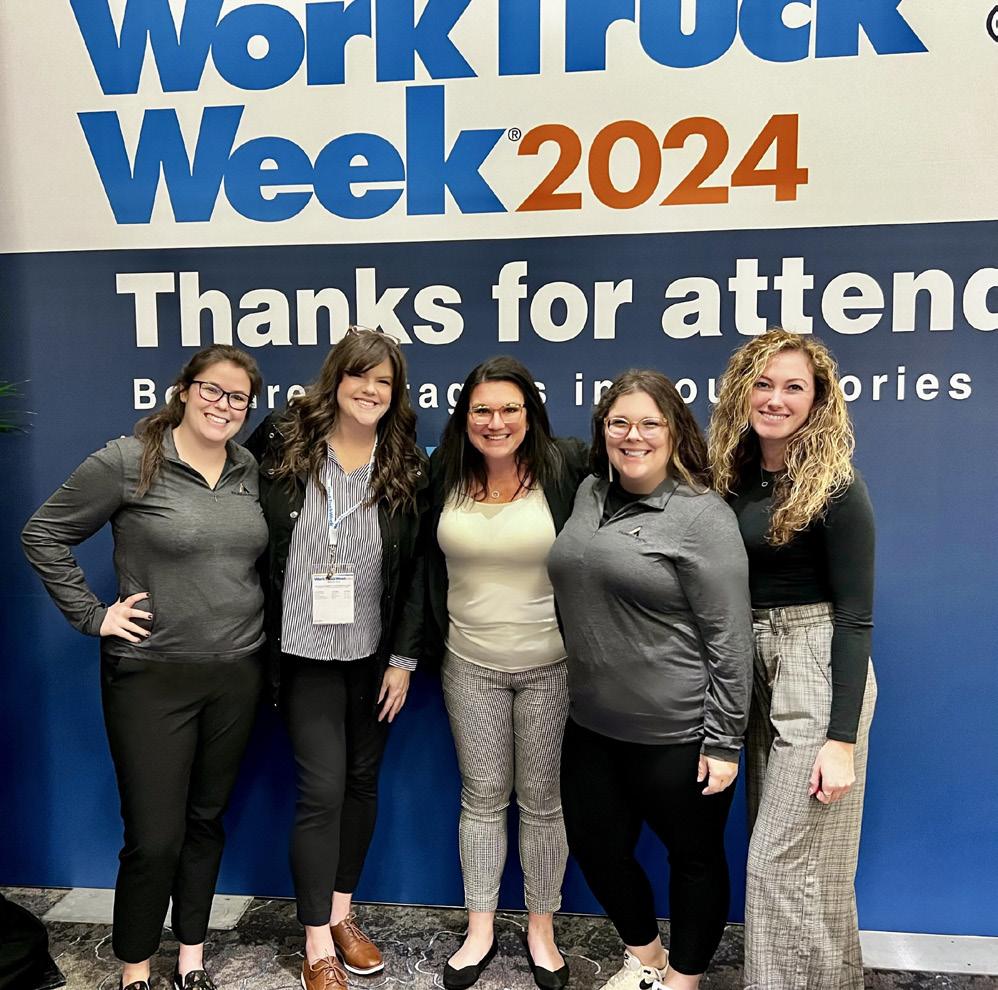

In our time there, we not only met with truck OEMs, component manufacturers and industry players, but also attended the Green Truck Summit, the event’s advanced vehicle and fuel technology conference. This portion of the week highlighted the commercial vehicle advancements that are driving the industry toward greater sustainability, productivity and efficiency on both the enduser and manufacturer fronts. For a recap of what we saw on-site and a look at the latest releases from the exhibition hall, visit oemoh.co/wtw2024.
EDITORIAL
Editor Kathy Wells kwells@iron.markets
AUDIENCE
Audience Development Manager Angela Franks
PRODUCTION
Senior Production Manager Cindy Rusch crusch@iron.markets
Art Director Kimberly Fleming kfleming@iron.markets
ADVERTISING/SALES
Brand Director Sean Dunphy sdunphy@iron.markets
Brand Manager, OEM & Construction................Nikki Lawson nlawson@iron.markets
Sales Representative Kris Flitcroft kflitcroft@iron.markets
Sales Representative Craig Rohde crohde@iron.markets
IRONMARKETS
Chief Executive Officer Ron Spink
Chief Financial Officer JoAnn Breuchel
Chief Revenue Officer Amy Schwandt
Corporate Director of Sales Jason DeSarle
Brand Director, Construction, OEM & IRONPROS Sean Dunphy
VP, Audience Development Ronda Hughes
VP, Operations & IT Nick Raether
Content Director Marina Mayer
Director, Online & Marketing Services Bethany Chambers
Director, Demand Generation & Education Jim Bagan
Content Director, Marketing Services Jess Lombardo
CIRCULATION & SUBSCRIPTIONS
P.O. Box 3605 Northbrook, IL 60065-3605, Phone: 877-201-3915 Fax: 847-291-4816
circ.oemoff-highway@omeda.com

Take care,
LIST RENTAL
Looking ahead to our next issue, our May/June installment will feature the return of OEM Off-Highway’s Engine Spec Guide, a special supplement designed to provide engineers with the specs of hundreds of gas and diesel engine systems from major engine OEMs. We hope this guide, packed with pages of detailed spec information available both in print and online, can serve as your go-to resource throughout the year.


EDITORIAL ADVISORY BOARD
Craig Callewaert, PE, Chief Project Manager, Volvo Construction Equipment


Roy Chidgey, Business Segment Head, Minerals Projects and Global Mobile Mining, Siemens Large Drives US

Andrew Halonen , President, Mayflower Consulting, LLC
Terry Hershberger, Director, Sales Product Management, Mobile Hydraulics, Bosch Rexroth Corp.
Steven Nendick, Marketing Communications Director, Cummins Inc.

John Madsen, Director Engineering & Product Management, GKN Wheels & Structures
Doug Meyer, Global Director of Construction Engineering, John Deere
Andy Noble, Head of Heavy Duty Engines, Ricardo

Daniel Reibscheid, Business Development Manager, MNP Corporation
Matt Rushing, Vice President, Product Line, Global Crop Care, AGCO Corp.
Allen Schaeffer, Executive Director, Diesel Technology Forum
Keith T. Simons, President – Controls Products, OEM Controls, Inc.
Alexandra Nolde , Senior Communication & Media Specialist, Liebherr-Components AG
Bob Straka, General Manager, Transportation SBU, Southco, Inc.
Luka Korzeniowski, Global Market Segment Leader, Mobile Hydraulics, MTS Sensors
Chris Williamson, PhD, Senior Systems Engineer Global Research & Development, Danfoss Power Solutions Company


Sr. Account Manager Bart Piccirillo, Data Axle 402-836-2768 | bart.piccirillo@data-axle.com
REPRINTS & LICENSING
Brand Manager, OEM & Construction Nikki Lawson 920-542-1239 | nlawson@iron.markets
SUBSCRIPTION






Published and copyrighted 2024 by IRONMARKETS. All rights reserved. No part of this publication shall be reproduced or transmitted in any form or by any means, electronic or mechanical, including photocopy, recording or any information storage or
OEMOff-Highway (USPS 752-770, ISSN 1048-3039 (print); ISSN 2158-7094 (online) is published 6 times a year: January/February, March/April, May/ June, July/August, September/October and November/December by IRONMARKETS, 201 N. Main Street, 3rd Fl., Fort Atkinson, WI 53538. Periodicals Postage paid at Fort Atkinson, WI and additional entry offices. POSTMASTER: Send address changes to: OEMOff-Highway, P.O. Box 3605 Northbrook, IL 60065-3605. Printed in the U.S.A.


@oemoffhighway @oemoffhighway @oem-off-highway @oemoffhighway
Published by IRONMARKETS
201 N. Main Street, Fort Atkinson, WI 53538 800-538-5544 iron.markets oemoffhighway.com ironpros.com
retrieval
without written
from the publisher.
system,
permission
Individual print subscriptions are available without charge in the United States to original equipment
Digital subscriptions are available without charge to all geographic locations. Publisher reserves the right to reject nonqualified subscribers. Subscription Prices: U.S. $35 One Year, $70 Two Years; Canada and Mexico $60 One
$105 Two Years; all other countries, payable in U.S. funds, drawn on U.S.
$85 One
Two Years.
POLICY:
manufacturers.
Year,
bank,
Year, $160
EDITOR’S NOTE 4 MARCH/APRIL 2024 | OEM Off-Highway
The IRONMARKETS team joined more than 500 exhibitors and several thousand industry professionals at Work Truck Week 2024. The event took place March 5-8, at the Indiana Convention Center.
Cummins, Daimler Truck, PACCAR to Produce Batteries in Mississippi
The 21-gigawatt hour (GWh) factory is expected to begin producing battery cells in 2027.
Cummins’ Accelera division, Daimler Trucks and PACCAR have selected Marshall County in Mississippi for a new battery production factory. The factory will produce batteries for commercial electric medium- and heavy-duty trucks. The joint venture will localize battery cell production for commercial electric vehicles and is expected to create more than 2,000 U.S. manufacturing jobs, with the option for further expansion as demand grows. The 21-gigawatt hour (GWh) factory is expected to begin producing battery cells in 2027. The joint venture will create scale to deliver cost effective and differentiated battery cell technology that supports the adoption of electric vehicles for medium- and heavy-duty commercial transportation.
Accelera, Daimler Truck and PACCAR will each own 30% of, and jointly control, the business, which will focus on lithiumiron-phosphate battery technology for commercial battery-electric trucks. EVE Energy will serve as the technology partner in the joint venture with 10% ownership and will contribute its battery cell design and manufacturing expertise to the future cell manufacturing plant. The transaction is subject to customary closing conditions and receipt of applicable merger control and regulatory approvals, including the submission of a voluntary notice to the Committee on Foreign Investment in the United States.
Read More oemoh.co/s5ibw7573
Deere, Leica Collaborate on Digital Construction
The strategic partnership aims to help accelerate the digital transformation of the heavy construction industry. By combining the manufacturing expertise of John Deere with Leica Geosystems’ leadership in positioning and sensor technology, the two organizations will work together to develop and deliver solutions that improve productivity, reduce material costs and the number of passes required, which can help improve safety by minimizing traffic on construction sites. The pair hope to bring new levels of accuracy, productivity, and accelerate the implementation of safe and sustainable workflows to the construction industry, helping its customers succeed.
Leica Geosystems technology, software and services will be available for purchase on select John Deere construction equipment models starting in 2024.
Read More oemoh.co/bz94tugc

HD Hyundai Teams Up With Google Cloud
The move introduces generative AI in Hyundai’s core businesses. Google Cloud will provide enterprise solutions like its Vertex AI platform to develop industry-specific AI applications. The company will prioritize high-impact tasks like building AI solutions tailored to each industry’s needs; creating AI-based platforms to enhance customer digital experiences; and training AI experts.
HD Hyundai has already piloted a Generative AI service for after-sales calls at its construction equipment division. The collaboration with Google Cloud commenced in July 2024. It plans to establish a long-term AI roadmap to lead digital and business innovation.
Read More oemoh.co/570xs671
Technotrade Partners With Hainzl Group
The company becomes part of Hainzl Motion & Drives, a division of Hainzl Group, expanding its international presence.
Technotrade has become a part of Hainzl Motion & Drives, a division of the Austria-based Hainzl Group. Through acquiring a 50% share in Technotrade and establishing a joint venture with the Kejduš family, founders of the company, Hainzl expands its international market presence and adds a strong technology partner to its international company group.
Read More oemoh.co/ol940qxt
OEM Off-Highway | MARCH/APRIL 2024 5 NEWS BRIEF
MINING PRODUCTION UP
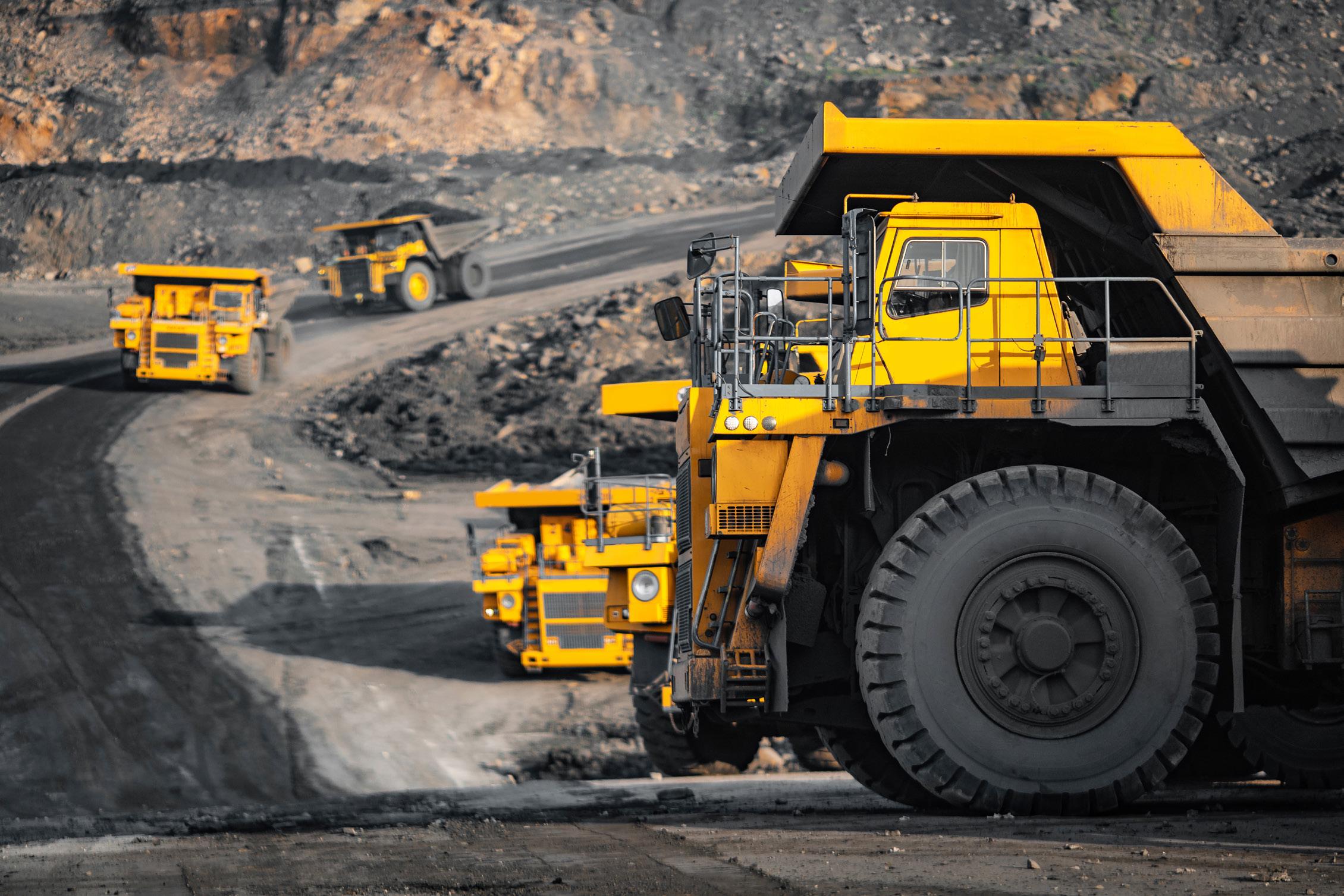
PACE
Industry-leading economic firm ITR Economics provides heavy-duty equipment market trends to help OEMs stay up to date on top industry information and insights, which can help them make better decisions in 2024. In our continued analysis, recent data shows last year’s U.S. mining production was 4.9% higher than in 2022, with annual production continuing to rise at a slowing pace.
Economists suggest that an overall weakening in the macroeconomy will result in less demand for goods and thus less demand for mined raw materials in the quarters ahead. However, the oil and gas sector remains on a growth trajectory. The following provides a summary of key observations across 13 indicators and areas of industry that contribute to today’s global economic conditions.
• The monthly rate-of-change for the U.S. OECD Leading Indicator continued rising in December.

• While this indicator is signaling an earlier industrial production low, a broader mix of economic evidence still suggests further decline.
Editor’s Note: Please note that this chart has been modified on the Y-axis to show the trend more easily. All data for charts are supplied by ITR Economics. Annual % change in 12 month moving totals Monthly index Europe Leading Indicator -0.3 0.0 0.3 0.6 0.9 1.2 1.5 -0.3 0.2 0.6 0.9 1.2 1.3 1.3 1.2 Dec Nov Oct Sep Aug Jul Jun May '23 MARCH/APRIL 2024 | OEM Off-Highway 6 oemoffhighway.com/economics EQUIPMENT MARKET OUTLOOK Sponsored by Eberspächer US Leading Indicator Editor’s Note: Please note that this chart has been modified on the Y-axis to show the trend more easily.
Economics is an independent economic research and consulting firm with 75+ years of experience. @PARILOV – STOCK.ADOBE.COM Visit oemoffhighway.com to sign up for our monthly ECONOMIC NEWSLETTER.
YOY, RISING
SLOWING
ITR
US
AT
US Industrial Production
• Industrial Production in the fourth quarter was 0.2% below the fourth quarter of 2022. Production trended flat for much of 2023.
• Downside pressures are likely to linger and potentially intensify in 2024 as the lagged effects of contractionary monetary policy unfold. A weaker consumer will dampen demand for goods, negatively impacting the manufacturing sector.
US Private Nonresidential New Construction
• U.S. Private Nonresidential Construction in the three months through November 2023 came in 22.5% above the same year-ago level.
• The quarterly growth rate ticked down slightly and macro trends suggest slowing growth is likely ahead. Trends in U.S. Corporate Profits and U.S. Commercial and Industrial Sector Architecture Billings Index signal further downward pressure ahead.
US Total Public New Construction
• Annual U.S. Total Public Construction in November totaled $429.7 billion, 14.9% above the year-ago level.
• One of the largest components of Public Construction is US Public Highway, Street and Infrastructure Construction, which is at a recordhigh level and accelerating.
A WORLD OF COMFORT


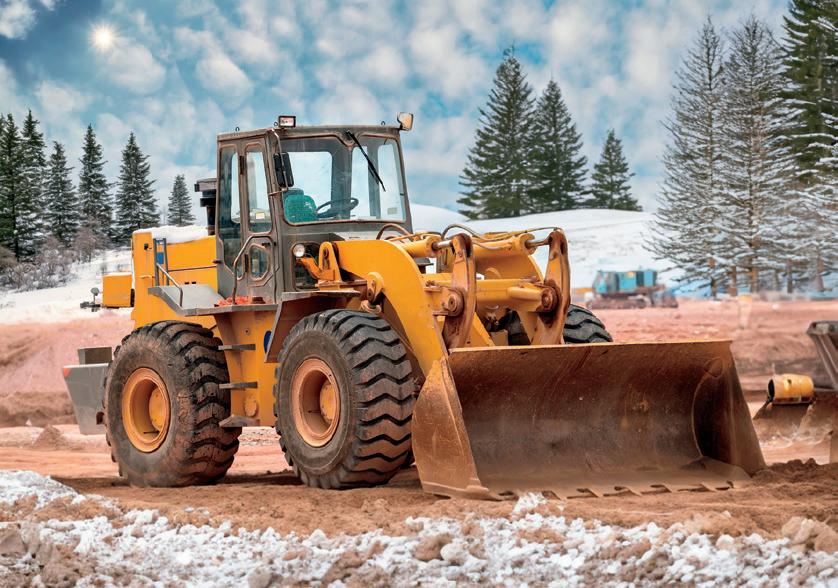
Airtronic and Hydronic Heaters
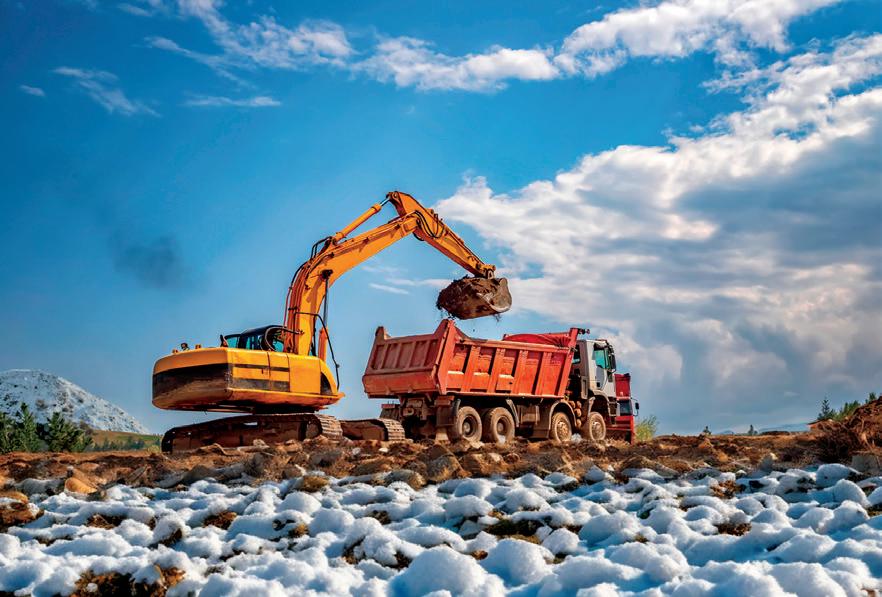
Eberspächer offers a diverse selection of fuel-operated heaters, including the high-performance Airtronic S3 Commercial/M air heater and the innovative Hydronic S3 Commercial water heater, ensuring driver/operator comfort in any environment.

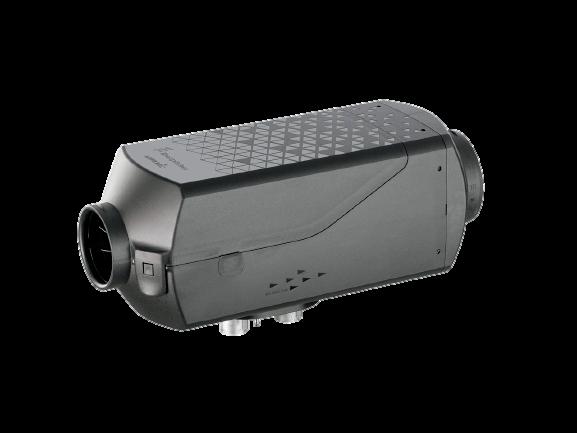
Annual % change in 12 month moving totals -25 -20 -15 -10 -5 0 -9.1 -12.3 -15.5 -18 -20.6 -20.7 -21.3 -21.4 Nov Oct Sep Aug Jul Jun May Apr '23 US Farm Machinery and Equipment Supplies Annual % change in 12 month moving totals 0 3 6 9 12 15 8 9.3 10.5 11.4 12.4 13.4 14.3 14.9 Nov Oct Sep Aug Jul Jun May Apr '23 US Total Public New Construction Annual % change in 12 month moving totals 0 1 2 3 4 5 6 7 8 1.1 1.6 1.9 2.9 4 4.8 6.1 7.4 Dec Nov Oct Sep Aug Jul Jun May '23 US Mining & Oil Feild Machinery Production Index
MORE
OEM Off-Highway | MARCH/APRIL 2024 7
|
AT EBERSPAECHER-OFF-HIGHWAY.COM
US Farm Machinery Production
• Annual US Farm Machinery and Equipment Shipments through November were 21.4% below the year-ago level.
• Lower commodity prices in 2023 likely cut into farmers’ income, suggesting downward pressure on Shipments. While we will likely see interest rates go down in 2024, providing some relief, the negative impact on this market could linger.
Europe Ag & Forestry Machinery Production
• Annual Europe Agricultural and Forestry Machinery Production in November, although declining, is 2.9% above the year-ago level.
• The European Central Bank recently announced they are keeping key interest rates unchanged; persistent and elevated interest rates will likely continue to damper demand for and reduce Production.
Europe Leading Indicator
• The Four Big European Nations Leading Indicator monthly rate-of-change ticked down but has been in a general rising trend since late 2022.
• Annual Europe Industrial Production in November 2023 was 2.3% below the year-ago level and will likely continue to decline in at least the near term given contractionary monetary policy.
US HeavyDuty Truck Production
• U.S. Heavy-Duty Truck Production declined in late 2023, with the year coming in 3.5% higher than 2022.
• Expect further decline in the near term given the suppressed freight market.
US Mining Production Germany Industrial Production
• U.S. Mining Production in 2023 was 4.9% higher than in 2022. Annual Production is rising at a slowing pace.
• Overall weakening in the macroeconomy will result in less demand for goods and thus less demand for mined raw materials in the quarters ahead. However, the oil and gas sector remains on a growth trajectory.
• Germany Industrial Production in the three months through November was 4.3% below the same three months one year earlier.
• The Germany Manufacturing Purchasing Managers Index, which leads Production by nearly a year, is signaling further decline ahead.
Annual % change in 12 month moving totals 0 5 10 15 20 15.3 13.8 12.8 12.8 8.5 4.6 3.4 3.5 Dec Nov Oct Sep Aug Jul Jun May '23 US Heavy-Duty Truck Production Annual % change in 12 month moving totals # $% # $$ & $$ & $% # # ) US OECD Leading Indicator -1.2 -1.0 -0.8 -0.6 -0.4 -0.2 0.0 0.2 0.4 0.6 0.8 -1.1 -0.7 -0.3 0 0.3 0.5 0.7 0.8 Dec Nov Oct Sep Aug Jul Jun May '23 Annual % change in 12 month moving totals 0 3 6 9 12 15 12.8 13.2 12.8 12 11.4 14.8 13.7 12.7 Nov Oct Sep Aug Jul Jun May Apr '23 US Construction Machinery New Orders Annual % change in 12 month moving totals 0 5 10 15 20 25 18.2 19.5 20.2 19.3 14.7 14.7 16.7 15.3 Nov Oct Sep Aug Jul Jun May Apr '23 US Defense Capital Goods New Orders Annual % change in 3 month moving totals -0.6 -0.5 -0.4 -0.3 -0.2 -0.1 0.0 0.1 0.2 0.3 0.4 0.4 0.2 -0.1 0 0.1 -0.3 -0.6 -0.2 Dec Nov Oct Sep Aug Jul Jun May '23 US Industrial Production 0 2 4 6 8 10 12 10.7 11.2 11.2 10.6 8.7 7.4 5.1 2.9 Nov Oct Sep Aug Jul Jun May Apr '23 Europe Agriculture Machinery Production Annual % change in 12 month moving totals MARCH/APRIL 2024 | OEM Off-Highway 8 oemoffhighway.com/economics EQUIPMENT MARKET OUTLOOK Sponsored by Eberspächer
Editor’s Note: Please note that this chart has been modified on the Y-axis to show the trend more easily.
US Construction Machinery, New Orders
• Annual U.S. Construction Machinery New Orders in November 2023 were 12.7% above the yearago level.
• New Orders will likely soften in the near term due to elevated interest rates and stagnant corporate profits, although opportunities exist in sectors benefiting from government assistance, such as infrastructure and data centers.
US Mining & Oil Field Machinery Production Index
• Though average Production in 2023 was 1.1% above 2022, Production is declining and will likely continue to do so in the near term.
• Compared to 2021 and 2022 levels, commodity prices are generally lower, dampening the incentive to mine. Expect further downside pressure in the mining machinery market in at least the near term.
US Defense Industry, New Orders
• Annual U.S. Defense Capital Goods New Orders in November totaled $169.6 billion which is 15.3% above the year-ago level. Expect New Orders to generally rise in the near term.
• While the defense budget could cap investment in 2024, continuing conflicts in Ukraine and Israel could result in additional aid funding which would positively impact New Orders.



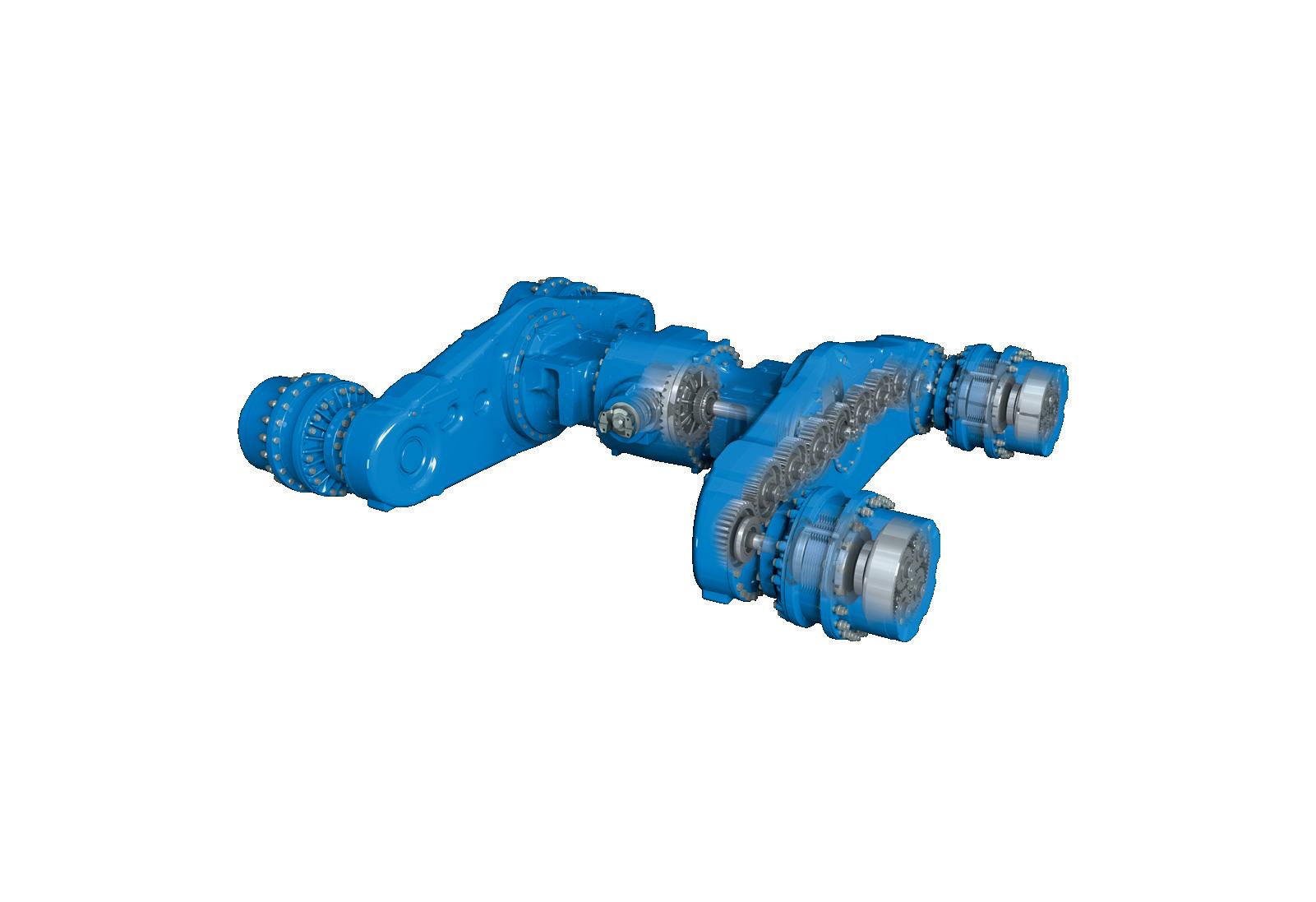
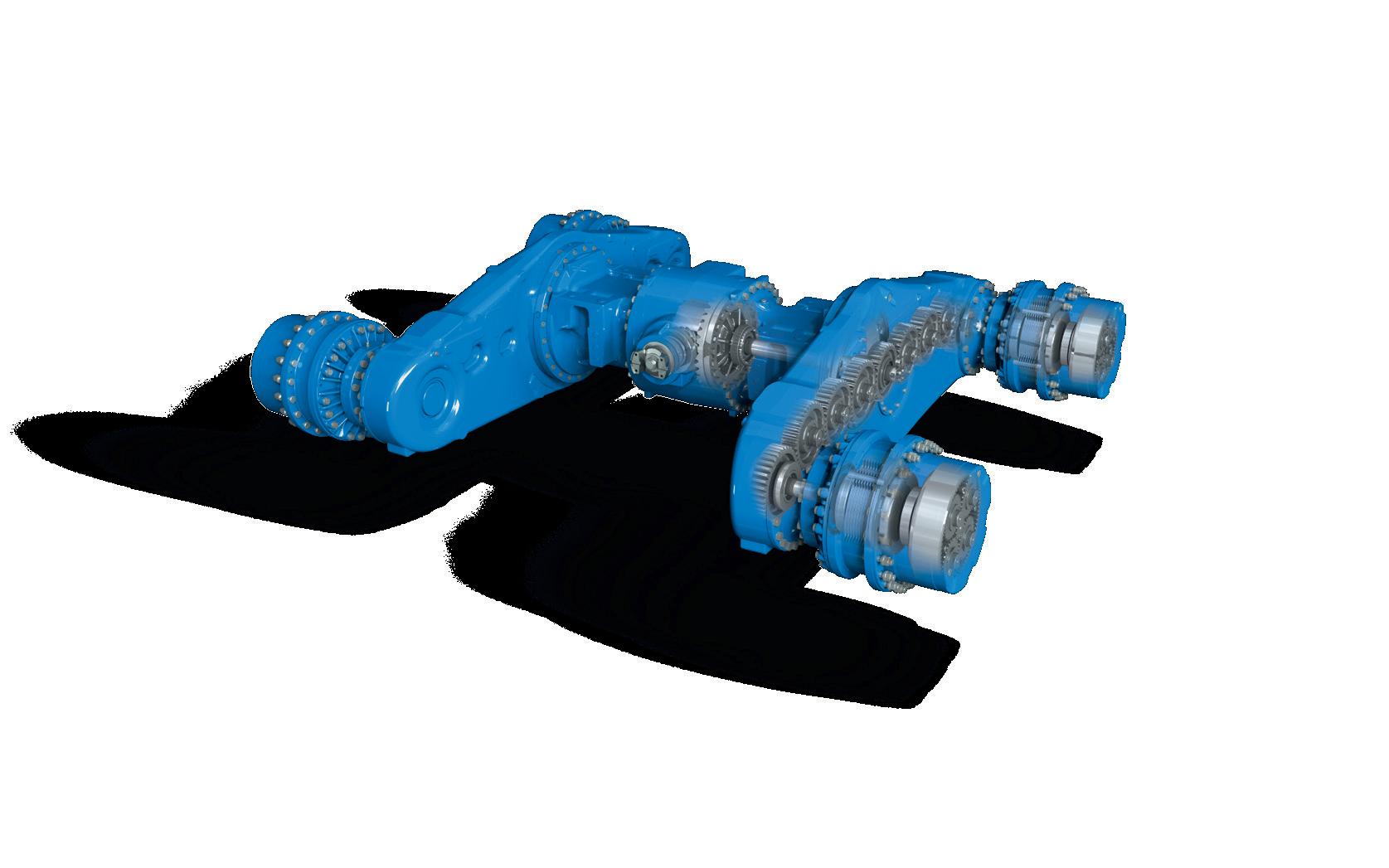
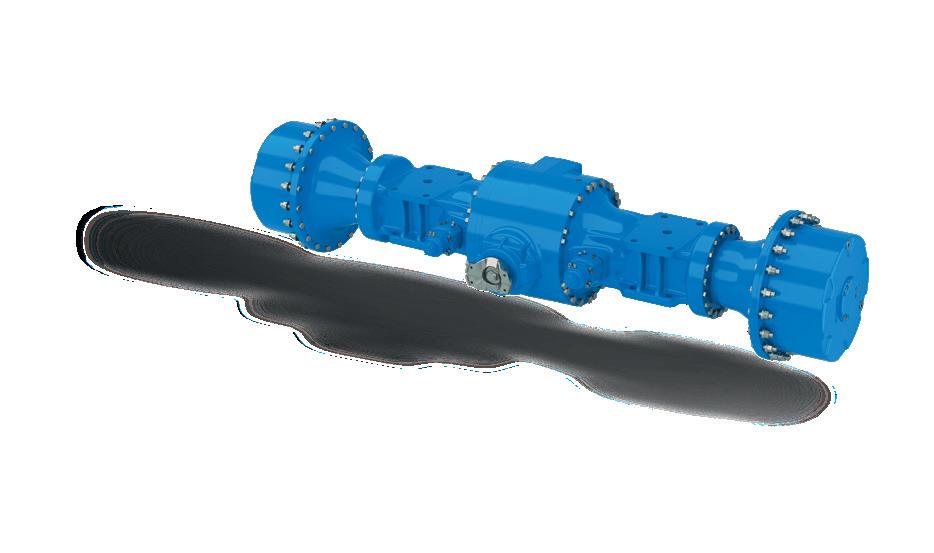


0 1 2 3 4 5 6 7 8 7.1 7 6.7 6.4 5.8 5.3 4.9 4.9 Dec Nov Oct Sep Aug Jul Jun May '23 US Mining Production Annual % change in 12 month moving totals -5 -4 -3 -2 -1 0 -0.2 -1.1 -1.3 -1.2 -0.7 -4.2 -3.5 -4.3 Nov Oct Sep Aug Jul Jun May Apr '23 Annual % change in 3 month moving totals Germany Industrial Production Annual % change in 12 month moving totals 0 5 10 15 20 25 21.1 21.7 21.8 21.7 22 22.7 23.6 22.5 Nov Oct Sep Aug Jul Jun May Apr '23 US Private Nonresidential New Construction DualSync® with CVT functionality PLANETARY RIGID AXLES optional with electric drive HydroSync® shiftable while driving HEAVY DUTY HIGH TORQUE PLANETARY RIGID AXLES NAF AG BUILDS MODULAR DRIVELINES FOR CONSTRUCTION, FORESTRY, MATERIAL HANDLING AND AGRICULTURE APPLICATIONS. OUR DRIVELINES ARE COVERING A WIDE RANGE OF OFF ROAD APPLICATIONS WITH PROVEN RELIABLE DESIGN FOR MORE THAN 60 YEARS. REALISING YOUR REQUIREMENTS WITH NAF’S MODULAR DESIGN IS OUR GOAL. FOR YOUR HEAVY DUTY PLAYGROUNDS BOGIE AXLES MADE IN GERMANY MODULARMINDED AXLES Permanent ® Bogie Balancing System NAF Neunkirchener Achsenfabrik AG OEM Off-Highway | MARCH/APRIL 2024 9
THE ROAD TO AUTONOMY
Market conditions & the path forward for the development, adoption & delivery of on- & off-road driverless technologies
by Wilfried Aulbur, Giovanni Schelfi, Walter Rentzsch
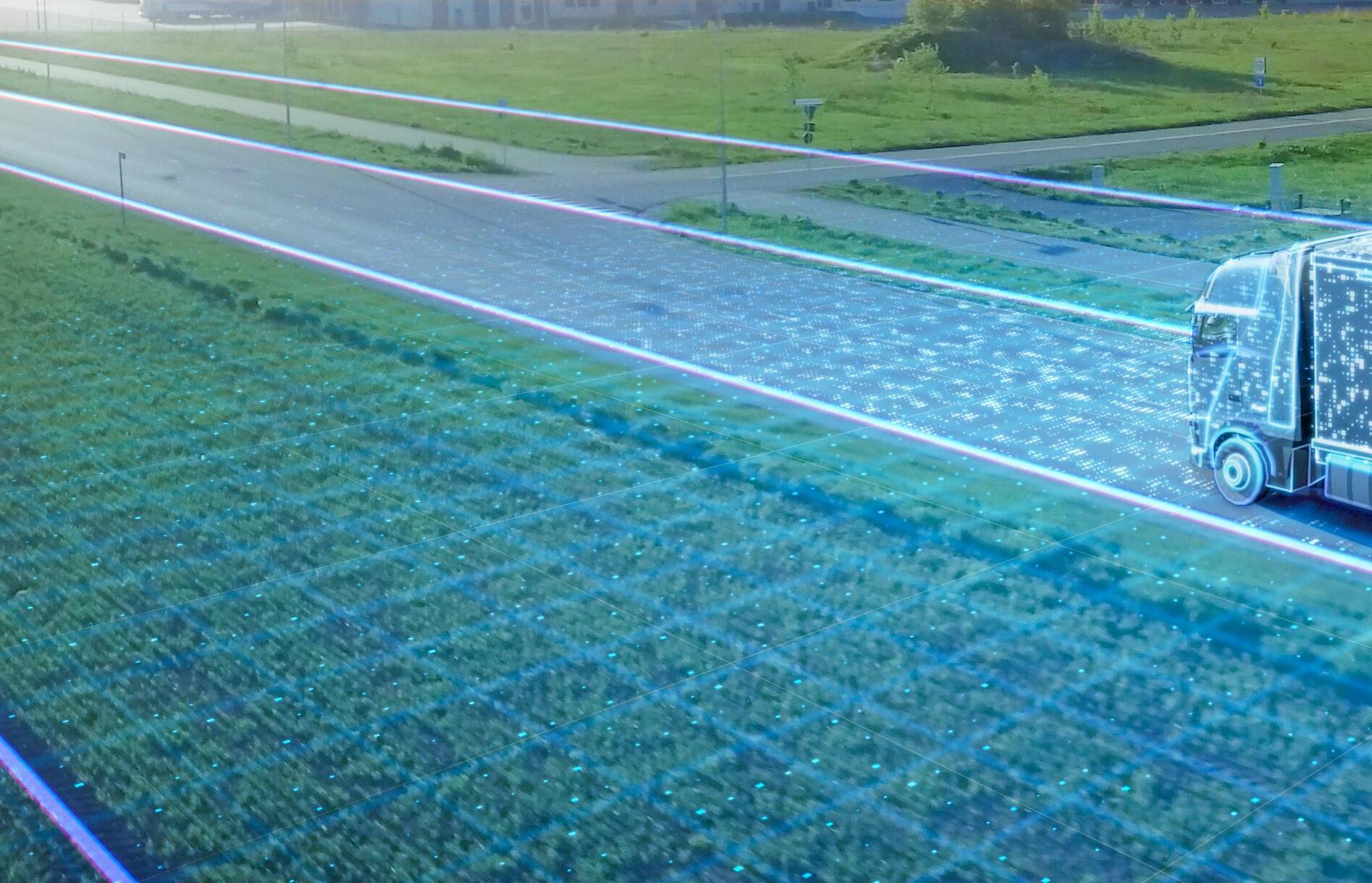
The last 12 to 18 months have been challenging for the autonomous industry.
Disturbing news seemed to chase each other as Waymo seemed to go back on their commitment to drive L4 truck autonomous uses cases, TuSimple focused on its China business and is in the process of delisting from Nasdaq, Cruze is facing cash flow challenges and companies such as Argo. AI and Embark are no more. An overall volatile environment and high interest rates made funding rounds challenging for startups as well as OEM-affiliated entities. Valuations of listed companies tanked.
Given this upheaval, some industry observers may be tempted to think that the future of autonomy is shaky or that, at the very least, we are solidly in the trough of disillusionment of the high-tech hype cycle. Yet, this would not adequately reflect realities on the ground.
In the agricultural space, autonomous tractors are providing tillage on demand in real-life applications. Farmers can book autonomous services on a
per-hectare basis, while watching the equipment work on their iPhone as they have dinner at home. Countless autonomous robots are providing crucial pre-harvest and harvest assist activities in specialty crop applications. Farmers bank on these robots to address critical labor shortages in the industry and are increasing investments in these new technologies on a year-over-year basis. With autonomous tractors being feasible, the race is on to automate the work functions of implements such that labor intensity and agricultural efficiency can be further improved.
Mining is another area in which autonomous trucks are evermore present. Leading mining truck companies such as Caterpillar and Komatsu have hundreds of mining trucks in operation across dozens of sites. Safety and total cost of ownership are major drivers for adoption. Not having to deploy human drivers in barren and remote mining environments is a plus, as are the reduced maintenance costs that result from operating trucks within design parameters. Staying within
design parameters is by design in autonomous trucks, yet not necessarily the case with human drivers. These benefits overcompensate investments in better-maintained roads, support crews that need to intervene should an autonomous truck get stuck, etc. The case for autonomy is so compelling that companies are actively mapping and investing in other use cases for automation such as semi-autonomous loading.
On-road applications with restricted operational design domains (ODDs) are successful as well and improve modern lives, particularly in rural areas. At a recent panel at CES 2024, one of the speakers discussed the positive impact that shared taxi operations and last-mile distribution solutions can have on the livelihoods of rural populations, as well as underserved populations in urban environments. Together with Laura Chace (CEO, Intelligent Transportation Society of America), Edwin Olson (CEO, May Mobility) and Richard Steiner (vice president of Government Relations and Public Affairs, Gatik) the panel clearly demonstrated that autonomy is crucial
MARCH/APRIL 2024 | OEM Off-Highway 10 CONSULTANT CORNER

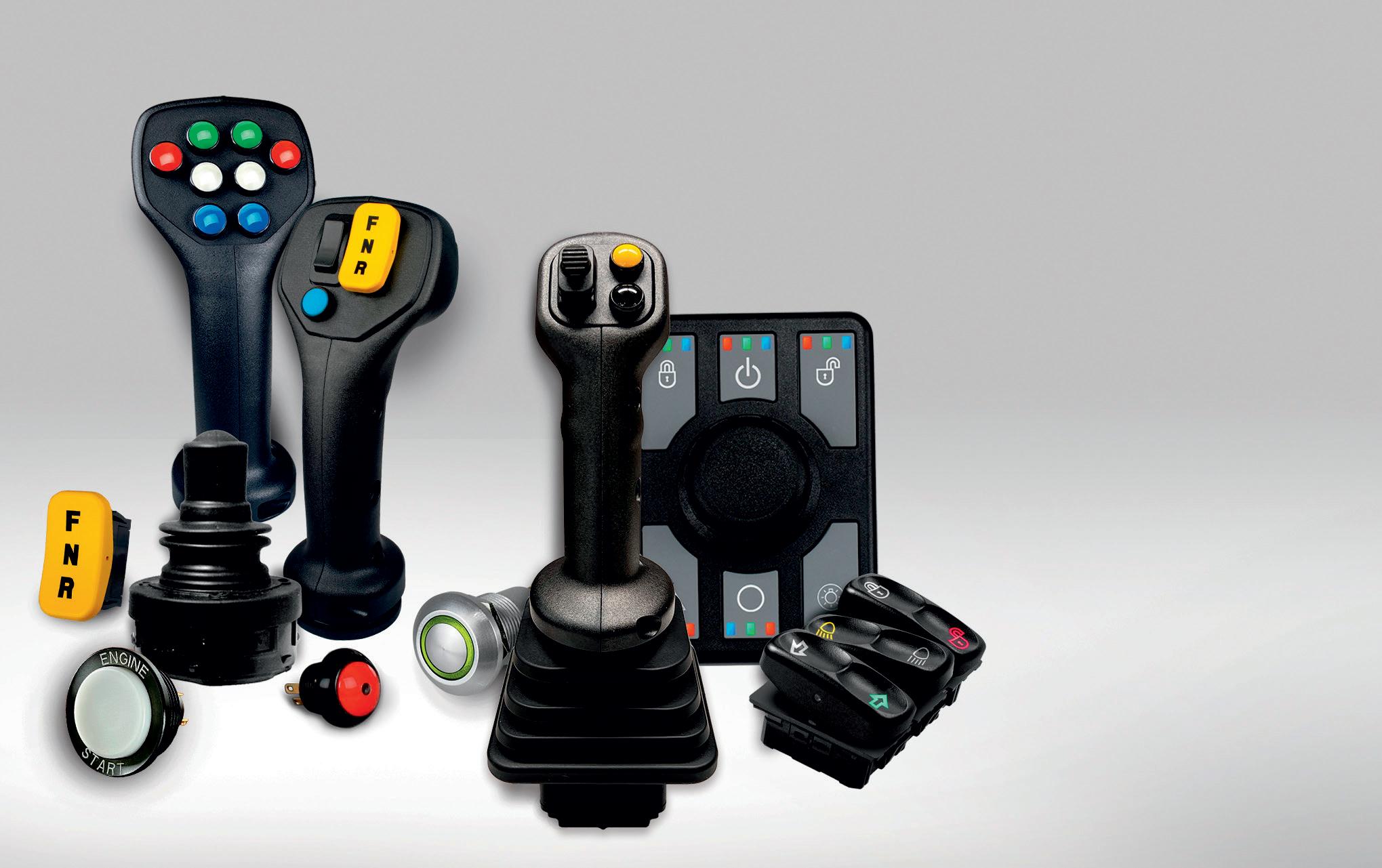

ADOBE STOCK | GORODENKOFF OEM Off-Highway | MARCH/APRIL 2024 11 The CANbus Collection CAN Joysticks CAN Rocker CAN Keypad Now Featuring: www.otto-controls.com | Scan to view the complete CANbus collection here Powerhouse Lineup OTTO Controls’
to not only address labor shortage, but also to enable access to vital resources such as employment opportunities, schools, government offices, etc., for weaker sections of society.
It enables a larger section of society to lead productive lives and does so in a safer manner than what we experience with human drivers.
Plus, even in on-road applications, clearly identifiable use cases exist in which deploying autonomous solutions are commercially attractive.
On-road, L4 long-distance trucking is hence one of the applications that has not quite been solved yet. However, after being delayed several times, the timeline of autonomous trucks is now becoming clearer. Autonomous trucks have gone through a classical hype cycle. After some bullish announcements early on and inflated expectations regarding the timing, players have changed their view on what is feasible in the mid-term. Slower-than-expected technology progress and safety issues have further pushed back these timelines. Now, the fog is clearing and the roadmap, at least for the coming years, feels more stable.
unexpected cut-ins, merges, night driving, further levels of inclement weather, and even construction sites. Many autonomous truck players are close to having implemented the full set of capabilities that the autonomous
The road to autonomy isn’t easy and its timeline strongly depends on the industry and the use cases that we are considering. However, across the board, the glass of autonomy is rather more than half full.
With players working on safety cases, “driver out” autonomous-driving technology is the next milestone within reach. Autonomous truck players have come a long way in training their systems on increasingly complex driving scenarios. Just five years back, autonomous drivers were capable of performing only simple capabilities, such as maintaining lane position and performing lane changes; systems have since been developed to handle
driver requires or are currently solving the last remaining challenges, such as pulling over to the road shoulder or inspections.
The focus of most players is now shifting from expanding the capability set and the ODD of the vehicle to validating and improving their systems. Players have used 2023 to prove the safety capabilities of their technology. Safety incidences, like those seen in 2022, may impact this overall delivery timeline, but if things run smoothly, driver-out operations can be expected in 2024.
While the ability to handle edge cases is critical for driver-out operation, having a safe action as fallback, where the vehicle comes to a controlled stop in a safe location, is equally critical. In the early phase of adoption, we will
see autonomous trucks sitting in a safe mode on the road shoulder while a remote operator on an on-ground support team takes over. While this will be feasible as long as the numbers of autonomous trucks in operation are small, the support needed, and thus the operating cost, must come down eventually. Including the cost of human support, driver out autonomous trucks will not immediately be cost competitive to conventional trucks. This proves that the driver out milestone is important, but theoretical. It determines the starting point of the market adoption curve, but the speed of adoption will be determined by both technological advancements and consumer behavior. While driver-out is an important technology milestone, large-scale commercial adoption is still far from realization. Parallel to technology development, autonomous truck players are working on commercializing their autonomous drivers. To accelerate market adoption, several players have chosen a business model in which they act as autonomous truck carriers hauling freight for customers with their own fleet of autonomous trucks. The number of loads handled is still very low today but will grow as more customers sign on and routes are expanded. In the mid-term, autonomous truck players will additionally make their technology available to traditional truck carriers, likely through a pay-per-use subscription model.
Once the technology is commercially available, a large market potential can be tapped. From a total addressable market perspective, about 40% of all on-road freight traffic could be handled by autonomous trucks.
CONSULTANT CORNER MARCH/APRIL 2024 | OEM Off-Highway 12
This is the share of freight traffic that, today, is handled by combination trucks and travels a distance of at least 200 miles. Shorter routes will, at least initially, not be economical while trucks still operate in a transfer hub model with costly first- and last-mile drays.
Savings from autonomous trucking will be significant, but market adoption will still not happen overnight. Several near- and mid-term constraints will determine the speed of market adoption. While driver-out operation is possible from a regulatory perspective in the vast majority of U.S. states, including Texas, where freight volumes are concentrated, some states, especially California, specifically prohibit autonomous trucking, limiting short-term adoption potential. Also, as OEMs and technology players do not all operate on the same timeline, different levels of OEM readiness will result in staggered market entry, limiting vehicle supply.
Toward the end of the decade, market adoption will be determined more by the operational readiness of fleets and their risk profile. In general, truck carriers are slow adopters of new technologies. This has been the case in the past with both telematics and lower-level advanced driver assistance systems (ADAS), and will likely be the case with autonomous technology.
Unionized fleets will face additional resistance. In addition, fleets need to change their operating model and integrate drayage runs into their operations to support the transfer hub model of autonomous trucking. While players will focus on high-density routes, such as the Texas Triangle, at the beginning, routes with lower freight density will eventually need to be unlocked. To operate on these routes with the same ROI that players are used to from high-density routes, technology cost must continue to be reduced. Finally, carrier consolidation is needed to drive market adoption beyond the large fleets/players of the industry.
Reaching full market penetration requires “unlocking” many capillary routes and eventually technology that is capable of handling dock-to-dock operations. Accounting for a quarter of the freight traffic by the mid-2030s would still mean rapid adoption, especially when compared to other similarly disruptive automotive innovations, such as electric powertrains. It took almost three decades between the release of the first purpose-built electric cars in the mid1990s and today’s full-scale production.
In summary, the road to autonomy isn’t easy and its timeline strongly depends on the industry and the use cases that we are considering. However, across the board, the glass of autonomy is rather more than half full.









At international management consultancy firm Roland Berger, Wilfried Aulbur is a senior partner, Giovanni Schelfi is a partner, and Walter Rentzsch is a director. Visit rolandberger.com.









































OEM Off-Highway | MARCH/APRIL 2024 13 The power behind it all.™ WWW.ISUZUENGINES.COM * WARRANTY 1 4LE2 Engine2 2.2L | 40-66 HP (30–49 kW) LIMITED5-year / 5,000-hour is the standard limited warranty. 3C models and power unit components offer a 2-year / 2,000-hour limited warranty. Warranty is based on years or hours of service, whichever comes first. See your authorized Isuzu Distributor or dealer for warranty and other details. 4LE2 engine shown. See your authorized Isuzu representative for performance info and specifications. 1 2 GENUINE PARTS DIAGNOSTIC TOOLS TRAINING & SUPPORT DEDICATED SERVICE NETWORK INDUSTRY-LEADING WARRANTIES1
AGRICULTURE’S MERGE Into the New Road Safety


Understanding the connected capabilities of V2X technologies & the need for standardization
by Ryan Milligan



The United States Department of Transportation (USDOT) has a draft plan for road safety, which took years — decades, even — to develop. During that time, technologies evolved, varying interests competed for bandwidth, politics changed, and the government found it must juggle the diverse needs of multiple stakeholders in order to achieve its ultimate mission: the eventual elimination of crashes on American roadways. Its draft plan, published in 2023, seeks to enable a safe, efficient, equitable and sustainable transportation system through the national, widespread deployment of interoperable vehicle-to-everything (V2X) technologies. “The U.S. has the technology and the resources to make its roadways substantially safer,” said Austin Gellings, director, Agriculture Services, Association of Equipment Manufacturers (AEM). “The USDOT’s plan is an important first step. From the agricultural safety standpoint, this is our opportunity to collectively begin to perfect connected communication.”
“There’s a high risk coming from agriculture machinery driving on roads, and although the number of accidents between agriculture machines and passenger cars is not that great, when they do happen, they typically have serious consequences,” said Johann Witte, head of Advanced Development Electronics, CLAAS.
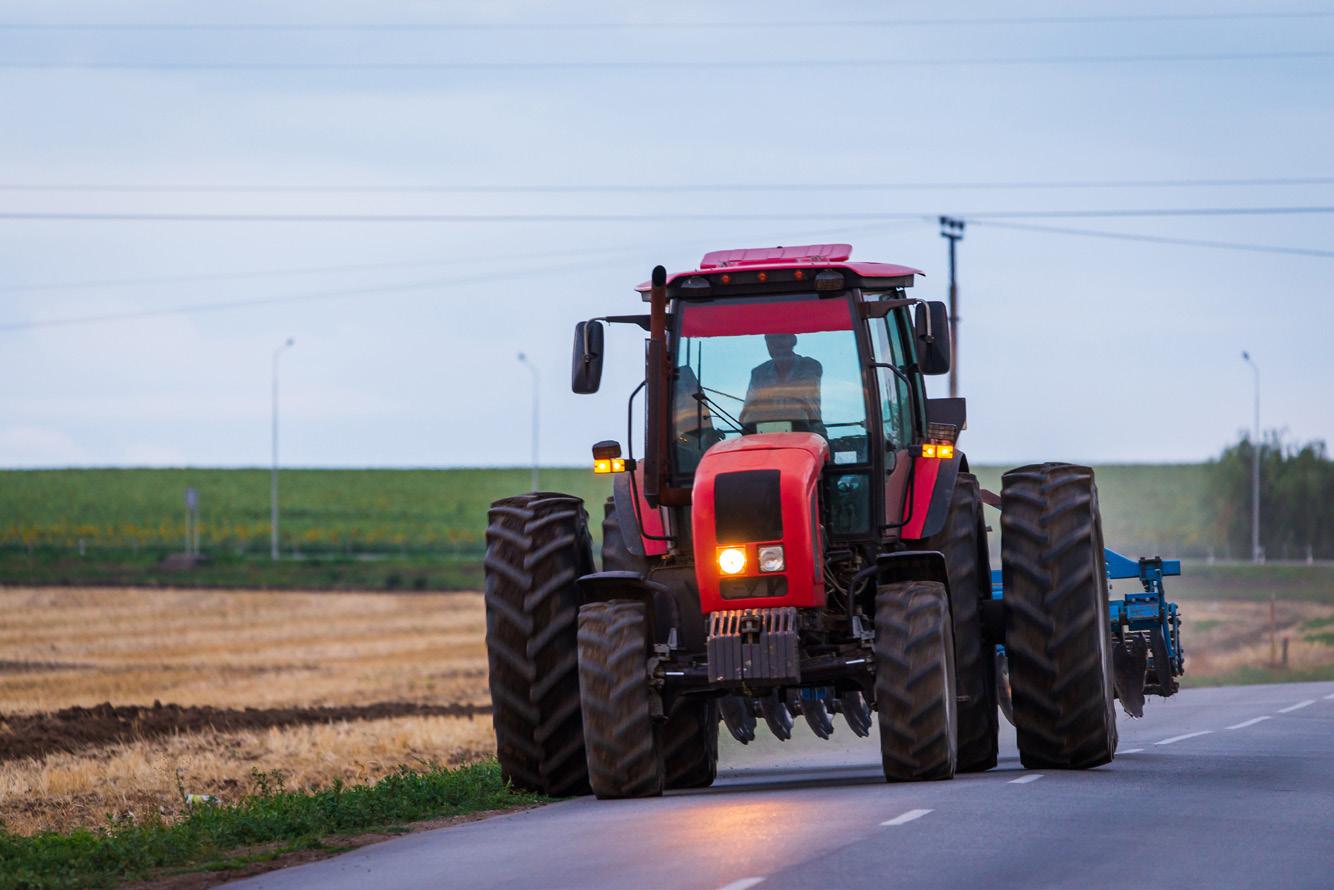
Whether it’s a grain cart, multiple combines, or a variety of ag machinery, each piece of equipment will know where the other one has been, and where it is going. And it’s not just equipment that will be connected; it’s the equipment’s connection to everything.
V2X
V2X is the all-encompassing term for a vehicle’s connected communications, or the idea that a vehicle will be able to use its on-board communication tools to deliver real-time traffic information, react to changing road conditions, recognize road signs and warnings, and more. This interconnected system depends on the exchange of real-time information to improve traffic efficiency, enhance safety, and enable autonomous driving. According to the USDOT’s plan to accelerate V2X, achieving and sustaining interoperability is necessary to fully realize the benefits across the nation. Interoperable V2X deployments will rely upon standards and wireless
technologies that must work together to function effectively. V2X is fundamentally a cooperative technology where the benefits on a large scale are many times greater than the benefits of individual systems. “We are appreciative of the accelerated rollout of V2X technology in the U.S. and the stable framework set in place,” said Tobias Nothdurft, manager of Research and Advanced Engineering, AGCO. “This gives companies a solid foundation for series introductions.”
The On-Ramp to the Next Level
Part of the USDOT’s road safety plan for V2X is the “Safety Band,” a band of wireless spectrum at 5.9 GHz reserved for transportation-related communications among the devices that support connected and automated vehicles. The ag industry is awaiting the next level of connectivity: Wireless-InfieldCommunication (WIC). The evolving digitalization of agriculture will require WIC between agricultural machines. According to the Agricultural Industry
ELECTRONICS & ELECTRIFICATION MARCH/APRIL 2024 | OEM Off-Highway 14
@ROSTODRIVER – STOCK.ADOBE.COM
Electronics Foundation (AEF), WIC serves as a facilitator for seamless and interoperable collaborative fieldwork, playing a pivotal role in addressing road safety concerns during transit to and from the field. AEF, a global industry organization, is working behind the scenes on interoperable technologies like WIC to provide the protocols for ag machinery OEMs to make safe, precise and smart vehicles that communicate in real time in the field. AEF consists of almost 300 ag business-related companies and universities from around the world. These groups provide the technical methods and procedures to enable open communication and interfacing between electronic systems of different ag machinery from independent manufacturers. The role of the organization is to make technology available across the agriculture industry, and one of its goals is to increase safety and decrease accidents between ag machinery and passenger vehicles.
AEF’s WIC team is focused on allowing machines from different manufacturers working in the same field, or on the same operation, to communicate wirelessly. WIC technology will allow tractor and implement combinations from different OEMs to work together cooperatively in the same field to make the infield activities more efficient where multiple machines are used simultaneously. “We started in 2018 with the first rough pilot technology, and over the last few years we have had demo events with real machines,” said Norbert Schlingmann, general manager, AEF. They have chosen an existing radio standard according to requirements like range, data rate, latency and availability that will work in most parts of the world, including North America and Europe.
This will be combined with a communication middleware provider, to enable manufacturers of ag machines to integrate a brand interoperable, machineto-machine, in-field communication channel, similar to a Bluetooth standard for tractors. This will enable coverage map sharing between machines of different colors, camera (on one machine) and remote display (on another machine),
even platooning (one machine controlling another) will be possible. In addition, this type of communication can be used to communicate to road users (cars and trucks) when there is an ag machine entering the road. This interoperability between machine brands will allow customers to benefit from reduced operator strain and fatigue (e.g. automated procedure for offloading grains to a trailer).
Different Paths to Road Safety
While ag equipment is used around the globe, the geography, standards and technology are all different country to country, and continent to continent.
“The safety band in the U.S. can be used for road safety use cases only, and this band should support the use cases AEF has shown in our road safety demos during 2023,” said Nothdurft. “However, this band wouldn’t be sufficient from a throughput perspective for in-field communication use cases, and it is not permitted to be used for non-safety applications like process data exchange. So, we would need to use other frequency bands and wireless technologies like Wi-Fi for this.”
“Looking at the amount of ag equipment produced, you can see it is a niche application compared to passenger cars or even trucks,” said Witte.
Automaker Volkswagen, for example, has already begun deployment of this technology in Europe and now has more than one million passenger cars equipped with radio technology, enabling them to talk to other vehicles similarly equipped with this technology. AEF is in close contact with Volkswagen, as all new models in the EU will be equipped with this technology.
“In the U.S., the goal of road safety is possible. There is a single channel, which is a sufficient amount, at least for a lot of these day one use cases,” said Witte. “In Europe, it’s a bit different. There’s more space allocated for the [Cooperative Intelligent Transport Systems] C-ITS systems, not only for road safety, but also efficiency topics.” According to Nothdurft, most of the learnings AEF has gathered
from prototypes and initial tests can be transferred to the U.S. market. “The vehicle ISOBUS interface can stay the same. There are chipsets and communication stacks available covering both markets and radio communication requirements,” he said.
“A certain amount of spectrum is available for doing wireless communication. And when we are talking about C-ITS today, available chip sets are capable for working in different areas of the spectrum and supporting different radio protocols,” said Witte. “I’m not afraid of supporting both in the end. It’s more about the decision of the car manufacturers, which technology will be introduced in which market, and then [adopting] it within our machinery.”
Driving the Industry Forward
As things progress, existing standards will need to grow and be adapted, but right now, the agricultural industry has come together to collaborate on these efforts. Accelerating V2X deployment is an important step toward saving lives through connectivity. V2X, WIC and autonomy are transformational technologies that will not only advance safety, but also enhance efficiency and reduce negative environmental impacts.
“We are all pushing toward zero accidents and zero accident-related deaths. If it saves one life, it’s worth it,” said Gellings. “But how we get there, and what that road looks like, will require collaboration within the industry and with our external stakeholders.”
“Autonomy is going to play a piece in that effort, but I don’t know if that’s going to be the only answer. That’s why it’s so important that we work together, both within our industry, with other industries, with government and other external stakeholders; we need to find ways that work for everybody.”
Ryan Milligan is director of business development at Powell Electronics’ Powell Agricultural Solutions and deputy team leader for communications and marketing for the Agricultural Industry Electronics Foundation (AEF). Visit powell.com.
OEM Off-Highway | MARCH/APRIL 2024 15
For HD Hyundai, THE FUTURE IS IN XITE

A glimpse into construction jobsite transformation with XiteSolution President & CEO Youngcheul Cho
by Kathy Wells
At the Consumer Electronic Show (CES) 2024 in January, HD Hyundai revealed its vision for the future of construction. Packaged under the theme “Xite Transformation” (pronounced ‘site’), HD Hyundai aims to develop solutions for the sustainability of humanity. Xite, as HD Hyundai refers to it, is an expanded concept for construction jobsites, and incorporates the company’s goal to deliver “innovation in building smart construction sites with autonomous, digital twin, ecofriendly, electrification and more future construction equipment technologies.”
A keynote speech delivered by HD Hyundai Vice Chairman and CEO Kisun Chung revealed the company’s latest technology, X-Wise and X-Wise Xite, both of which will play a key role in
the company’s journey toward Xite Transformation.
According to the company, X-Wise is an AI platform designed to maximize safety and efficiency in fleet management, with the ultimate goal of reaching site autonomy. X-Wise will be applied to all HD Hyundai’s industrial solutions as a base technology going forward. X-Wise Xite is an intelligent site management solution developed for optimal production of infrastructure by connecting all construction equipment applied with X-Wise in real time.
In addition to realizing site autonomy with these two innovative technologies, HD Hyundai plans to become the leader in open innovation by partnering with global top players in the industry to build a new global ecosystem.
If that’s not enough, HD Hyundai XiteSolution, the controlling company of HD Hyundai Construction Equipment and HD Hyundai Infracore, is also setting ambitious goals for the future of construction. XiteSolution aims to not only build synergy across the company’s subsidiaries, but also shape
its own industrial vehicle and hydraulic component business.
Encompassing offerings from HD Hyundai Infracore and HD Hyundai Construction Equipment and HD Hyundai XiteSolution at the show, HD Hyundai showcased its vision for the future of construction jobsite at CES, highlighting three main areas:
• Future Xite - Advanced construction technologies for safer jobsites
• Twin Xite - Improved productivity and efficient in site operations
• Zero Xite - Decarbonized construction sites utilizing renewable energy sources
Future Xite presented what the future of next-generation construction machines will look like when utilizing advanced unmanned and automation technologies. Twin Xite introduced sitecontrol solutions and remote-control technologies based on digital twins. Zero Xite focused on exhibiting the company’s experience and technological capabilities for green energy value chains. Armed with a comprehensive
MARCH/APRIL 2024 | OEM Off-Highway 16 TECHNOLOGY NEWS
HD HYUNDAI
strategy and this vision for the future of construction, HD Hyundai aims to become a leading global player in the construction equipment industry. XiteSolution President and CEO Youngcheul Cho plays a key role in driving this vision forward.
Since joining the company in 1988, Cho has seen the company adapt through different phases of change and iterations of innovation — each more intelligent than the next.
According to Cho, the most recent shifts toward greater integration of technology and stronger drive to innovate have been the most notable.
“[At CES, HD Hyundai Vice Chairman and CEO Kisun Chung] announced the focus on all-new technologies designed to improve jobsite safety, environment and productivity,” said Cho. “Without a focus on technology — without any of these things — we cannot work forward, so that is that a target.”
At the show, the Twin Xite concept showcased X-Wise Xite as it assessed fleet and site productivity through task and production tracking, providing recommendations to improve efficiency, including adjustments to fleet positions and routes. In this construction site of the future, solutions are no longer restricted by time and space, utilizing remote-control and site simulations created with digital twin technology.
While tech advancements like Twin Xite are certainly a target, Cho says other priorities include a focus on research and development (R&D) and product development and design — areas in which the company is dedicating resources both now and in the coming years.
“Here at CES, we’re showing the newest type of machine, and soon you’ll see this scale of technology come through across different types of machines,” said Cho. The Future Xite concept showcased a 15-foot-tall electric-powered autonomous excavator, equipped with perception/safety sensor system. The equipment can be upgraded by software update. Additionally, it can be built with various upper body and undercarriage (track and battery) depending on its purpose and task.
According to Cho, at the close of
2022, the company shaped longterm manufacturing strategies for its construction equipment divisions, with the main priority being the development of new machines. “Secondarily, we are focused on being the best in the market — for example, in the North American and European markets, to be the best, we have to focus on different types of machines,” said Cho. “Currently, we are focused on medium- to large-scale [machines] at the heart of the largerscale machines in the mining sector. Last year, we did some motors and two different types of machines, and this year will be the compact track loaders.”
“At the close of 2022, the company shaped long-term manufacturing strategies for its construction equipment divisions, with the main priority being the development of new machines.”
All of this is a step in XiteSolution’s greater path toward growth. In terms of market share, the company is looking increase its footprint. “We are not covering 100% of the North American market, but we are ready to invest in that with our partners. With the compact machines, we’ll be able to cover more and offer a full lineup to increase our market share,” said Cho.
Ultimately, Cho sees an opportunity to take the company further and plans to pursue a spot in the top five construction machinery companies globally. “I think product-wise and pricewise, we have a competitive business,” said Cho. “As the new type of machine is introduced, [there is a need for] upgrading the sales channels and the lineup. And increasing the production volume will provide a benefit when it comes to cost-effective releases,
and getting more customers than the competition,” said Cho.
With regard to safety, the future construction site is focused on autonomous equipment to reduce operators’ exposure to dangerous conditions. “In the mining environment, sites are not close, and this work requires working across long distances in rough conditions. For example, mining materials from a mountainous site. Some of these sites are dangerous, so who will do this work? People cannot do this, but machines can go out — operated autonomously — for long periods and long distances and safely do this work,” said Cho. “These machines are really changing things, removing the threats from the operator, and adapting to different site situations.”
On the Zero Xite front, HD Hyundai shared a glimpse into its potential technological capabilities for green energy value chains. When it comes to climate concerns and carbon neutrality, the company is focused on alternative energy production and transportation solutions using both electric and hydrogen sources. Representing HD Hyundai’s efforts to realize an era of zero carbon emissions, the Zero Xite concept shows an eco-friendly energy value chain depicting how HD Hyundai produces, supplies and utilizes energy, shown through the process of how hydrogen and electric energy is produced, shipped and utilized from ocean to land.
According to HD Hyundai, the company is committed to being a “Future Builder” and “will continue to lead technological innovation to build infrastructure that will shape a more sustainable future for humanity.” Laid forth at the show in impressive fashion, this vision to solve the pressing challenges faced by humanity, such as safety, security, supply chain issues, climate change and more, is an ambitious one. But according to Cho, he’s all in: “We have a responsibility, not only to our clients, but to all people globally.
Kathy Wells is editor of OEM Off-Highway magazine. Visit oemoffhighway.com.
OEM Off-Highway | MARCH/APRIL 2024 17
POWERTRAIN PRIORITIES
Inside on- & off-highway power trends & the shape of the market today
by Kathy Wells

As original equipment manufacturers (OEMs) continue to work toward meeting regulatory changes and pinpointing new sustainability goals, the name of the game is emissions reduction. While electrification is leading the way today, fuel efficiency remains key to traditional powertrain success, and product diversification is the future.
Vehicles within the automotive, on-highway and commercial markets have seen the most engaged transition toward powertrain electrification. Particularly in the automotive market, powertrain suppliers are electrifying rapidly, creating both pressure and opportunity for suppliers. According to McKinsey & Company, electric vehicle sales between 2020 and 2022 grew by more than 90% in both the U.S. and Europe and by more than 300% in China.
In the commercial truck space, major players have begun to join forces in the hopes of taking the lead in electrification. Partnership acceleration is also a critical step in solving current electric charging infrastructure problems. According to Tim Campbell, managing director at Campbells Electric Vehicle Consultancy, “Partnership is the key. Not one manufacturer can do it alone. Whether it’s Cummins, Daimler
Truck and PACCAR producing batteries in Mississippi, or Daimler Truck, Volvo Group and TRATON Group, which is Scania and Navistar, building an infrastructure of 1,700 high-powered chargers across Europe — if we don’t get the infrastructure right, we don’t get the trucks on the road, the customer doesn’t buy them, you don’t engage with them. So that’s an important part of the game.”
In electrification within the offhighway realm, OEMs are challenged with more demanding power requirements and more diverse end-user needs, applications and equipment sizes across various industries. And while electrifying larger equipment is a tougher challenge due to demanding duty cycles and high power consumption and weight considerations, great opportunity remains in the electrification of smaller equipment. Successful launches in smaller electric equipment categories such as excavators, scissor lifts, compact wheel loaders, etc., from names like Volvo Construction Equipment, JLG, Caterpillar and others, provide good examples.
John Deere Power Systems Director, Global Marketing and Sales Nick Block says battery-electric offerings will play a key role for applications such as turf equipment, compact utility tractors,
small tractors, compact construction equipment, and some road-building equipment.
According to Interact Analysis
Principal Analyst James Fox, “Electrification of smaller off-road machines is flourishing. Forklifts were already 64% electric in 2022 (including a small amount with fuel cells), scissor lifts were 89%, and boom lifts 25%. Largely, as a result of this, 1.5 million or 27% of off-highway vehicles/machines covered by this report were already electric in 2022. However, if we exclude these categories, fully electric vehicles did not even reach 0.1% in off-road during 2022, with 2027 forecast to be just under 1% and 2030 about 5%. This is a much slower pace of growth than the truck and bus market.”
And while the electrification trend will continue to buzz, many OEMs have begun to emphasize the need for powertrain diversification, offering multiple solutions to both meet customer needs and offer loweremissions products. This conversation surrounding the future of powertrain technology is focused on balancing emissions reduction with efficiency gains, the importance of natural gas, hydrogen and renewable energy, as well as emerging emissions regulations.
MARCH/APRIL 2024 | OEM Off-Highway 18 FEATURE SERIES: POWERTRAINS
ADOBE STOCK PERYTSKYY
Although, as OEMs continue to diversify and develop alternatives, many remain in support of a future for more traditional power options like the internal combustion engine (ICE), powered by petroleum-based fuels like gasoline, diesel and natural gas and renewable bio-based fuels.
According to Statista, ICE offerings were the dominant powertrain in off-highway equipment worldwide in 2021, accounting for about 95% of the value of total sales that year, while sales of off-highway equipment with electric and hybrid powertrains made up only 5% of the total sales value. This data indicates that ICE is projected to retain its dominance in the offhighway equipment market in the coming years.
For many, environmental regulations will be top of mind as the industry looks to future emissions requirements, which
will be significantly more stringent and demanding in the development of new technologies in both the on- and offhighway segments.
Block says that by 2026, John Deere aims to offer customers a variety of electric equipment solutions, including more than 20 electric and hybrid models designed to reduce the carbon footprint of the off-highway industry.
“For heavy-duty applications like those found in the construction industry, we believe there is still a long lifetime ahead for compression ignition engine technology and we are investing in it accordingly with product advancements like [John Deere Power Systems’] nextgeneration engine lineup,” said Block.
As OEMs and product teams to look toward the future, emissions reduction and sustainability will continue to factor into decision-making, research and future product development.
For example, in 2023, Cummins invested $1.5 billion in the research and development of new engine platforms and technologies. The company also funded $1 billion in upgrades to two of its engine plants to enable the production of fuel-agnostic platforms.
“We ultimately believe that there will be a place for more efficient diesel, natural gas and hydrogen internal combustion engines for many years in the commercial vehicle markets we serve,” said Brett Merritt, vice president and president, Engine Business, Cummins.
“These products, together with Accelera by Cummins zero-emission products, will help our customers of all shapes and sizes, reduce emissions today and well into the future.”
Kathy Wells is editor of OEM Off-Highway magazine. Visit oemoffhighway.com.

A powerful positioner from ALM delivers up to 40%+ increased welding and assembly manufacturing productivity. You’ll also gain increased safety, quality and ergonomics to ensure maximized throughput is always within reach.
OEM Off-Highway | MARCH/APRIL 2024 19
GET YOUR QUOTE AT ALMMH.COM
ALM positioners
Exploring the ICE Age
Scania’s Henrik Nilsson offers insight into alternative fuels, emissions reduction & what the future holds for the internal combustion engine
by Kathy Wells
As the mobile equipment industry continues to explore alternatives to traditional powertrain options, the internal combustion engine (ICE) remains a core product offering for many original equipment manufacturers (OEMs). To discuss the ways in which this classic engine is evolving, OEM Off-Highway spoke with Henrick Nilsson, director product management at Scania, Power Solutions. Operating in over 100 countries, transport solutions provider Scania is increasing its focus on sustainable transport systems. In 2023, the company delivered 91,652 trucks, 5,075 buses as well as 13,871 industrial and marine power systems to customers across the globe. Founded in 1891, Scania continues to invest in the research and development of new engine platforms and believes the internal combustion engine will be a staple for years into the future. Read on for Nilsson’s insights.

1. How has the equipment electrification trend affected the future of internal combustion engines platforms in mobile off-highway equipment?
Nilsson: First of all, we see great interest and potential in electrification of mobile off-highway equipment, which is why we are investing in modular hybrid and fully battery electric power solutions. At the same time, we are launching our nextgeneration inline internal combustion engine platform, pushing the limits of performance, reliability and fuel efficiency. We truly believe that the internal combustion engine plays an important role in powering offhighway equipment for years to come, and improving its fuel efficiency will be crucial in combination with the implementation of electrification to meet the demands of more energy efficient equipment and to reduce CO2 emissions.
2. How have you seen the balance shift regarding ICE versus EV? Will ICE still be a player in 10 years? 20 years?
Nilsson: In the power range in which we offer our combustion engines, there is great interest from equipment manufacturers in learning more about electrification in general and in specific niches there is a more concrete demand already here and now. As an example of this, we currently have a hybrid solution project in an airport firefighting vehicle. With that said, we believe that the combustion engine still will play a key role in the mentioned time period, although with more focus on the combination with electrification solutions and on alternative fuels. Again, this is why we are investing in our next generation inline engine platform, to enable real CO2 emission reductions, lower operating cost and better performance in off-highway equipment already now.
MARCH/APRIL 2024 | OEM Off-Highway 20 FEATURE SERIES: POWERTRAINS
Offering lower CO2 emissions, Scania’s DC13 next-generation engine is compatible with renewable 100% HVO fuel.
SCANIA
3. What are the market opportunities for ICE moving forward? Conversely, what are the limitations?
Nilsson: There is a lot to be done when it comes to optimizing combustion engine-powered off-highway equipment now and moving forward and we see great market opportunity in that. We believe in electrification of off-highway equipment, but it will not happen overnight in all types of equipment, which is why we advocate for choosing the most fuel-efficient combustion engine solution here and now. If operated on HVO fuel it is possible to substantially reduce the CO2 footprint with existing technology. The combustion engine technology as such is great in terms of the flexibility it offers both equipment manufacturers and operators, and it is also a technology that can offer market opportunities for many years to come even if it is not with diesel but with alternative green fuels.
4. What are Scania’s goals to support the longevity of its ICE products?
Nilsson: First and foremost, Scania’s purpose is to drive the shift toward a sustainable transport system, creating a world of mobility that is better for business, society and the environment. In this, our approach to sustainable transport rests on three pillars: energy efficiency, renewable fuels and electrification and smart and safe transport. These pillars also apply to our power solutions for off-highway equipment, and they enable us to make our customers’ operations cleaner and more efficient. The next generation inline engine platform is key for the company to meet the science-based targets related to decarbonization that Scania has committed to.
5. How do sustainability and carbon emissions play into this plan?
Nilsson: Sustainability and carbon emissions play a significant part,
and there is no doubt that we need to offer solutions that enable significant reductions in carbon emissions. There is nothing stopping equipment manufacturers from starting right now by selecting the most fuel-efficient solutions available and thereby take the first step on the road toward emission-free solutions. In combination with electrified solutions and more sustainable fuels, such as hydrotreated vegetable oil (HVO), the combustion engine can play a significant role.
6. What next-generation offerings are coming down the pipeline from Scania? What makes them stand apart from offerings from other ICE OEMs?
Nilsson: Scania is both here and now, and for the future. With industry-leading fuel efficiency, we have a great starting point. Fuel efficiency is in our DNA and our next-generation inline engine platform is truly the result of this. While offering this here and now, we invest heavily into electrification, and we conduct research within the field of hydrogen combustion engines as well as hydrogen fuel cells.
7. What challenges will ICE manufacturers face in the engine environment of the future?
Nilsson: We are used to a stable environment in terms of diesel being the dominant fuel and in that we have faced the emission legislation challenge, which for sure will continue. However, with the changing technology landscape, we believe that there will be a bigger variation of preferred fuels and technologies depending on industry and equipment type. For example, equipment operating with high energy demand in rural areas will be challenging to electrify, paving the way for alternative fuel combustion engines. On the other hand, equipment operating with low energy demand in urban areas will be suitable for electrification. To navigate this, still uncertain, future environment will be one of the biggest challenges, making
sure we invest in the right technologies at the right time.
8. Are alternative fuels a viable option for the future for ICE products? If so, which ones are currently leading the pack?
Nilsson: Alternative fuels are definitely a viable option for combustion engines. Here and now, all our engines run on HVO, and there is significant savings to be made by switching from diesel. The benefit of HVO is that no changes have to be made to the powertrain, you simply change the fuel and you will get the same performance as with diesel without having to refuel more often.
Looking a bit further ahead, hydrogen is an interesting option, although it comes with new challenges such as fuel supply logistics, equipment design changes and changed refueling intervals. Also, for it to be more sustainable than HVO and even diesel, it requires green hydrogen, which at the moment is supplied in very limited quantities. With increasing green electricity supply as a source for green hydrogen, this could however be a game-changer in equipment, which is hard to electrify for reasons mentioned earlier.
9. What’s next for ICE platforms?
Nilsson: Our first step is the launch of our next-generation inline engine platform based on the Scania Super engine for on-highway trucks and adapted for off-highway purposes. The 11- and 13-liter engines are the most advanced combustion engines we have ever built, setting a new standard for performance, reliability and fuel efficiency. We are, for example, increasing power output by 11% and torque by 21% while improving fuel efficiency by up to 7%, compared to our current inline engines. This is an opportunity for OEMs to reduce the carbon footprint substantially here and now by making use of existing technology and infrastructure.
OEM Off-Highway | MARCH/APRIL 2024 21
Kathy Wells is editor of OEM Off-Highway magazine. Visit oemoffhighway.com.
4 KEYS to the Most Efficient Driveline & Component Testing
Understanding the features of hybrid & electrical vehicles & the powertrain testing technologies designed to improve their performance
by Randal Beattie
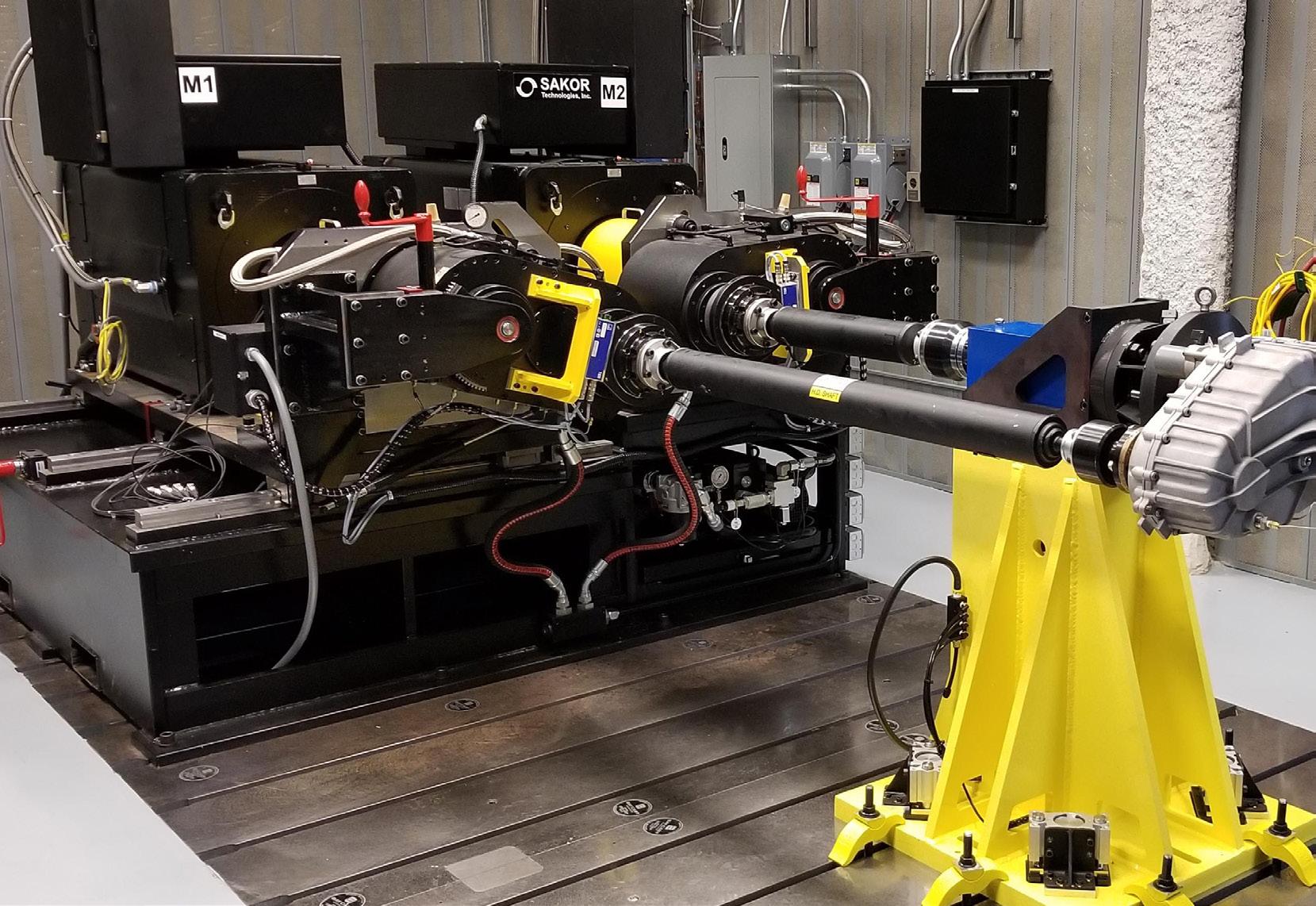

Over the past decade there has been a tremendous surge of interest in hybrid and electric vehicle (HEV) technology in the off-road heavy vehicle market, including construction and mining vehicles.
To gain promised efficiency benefits and green profile from these vehicles, driveline and component testing conducted during design and manufacturing must be specially adapted to the particular nature of HEVs.
Hybrid and electric drivetrains have several features that make testing them very different from the standard testing conducted on internal combustion (IC) only systems.
First of all, HEV systems use regenerative braking, in which braking actually generates power that is returned to and stored in the vehicle’s battery for later use. This typically requires addition of fairly complex AC inverter technology, and often more complex transmissions.
These vehicles also often have several module control units (MCUs), essentially small onboard computers, which control the functions of such major subsystems as the engine, transmission, and charging system, among others.
FEATURE SERIES: POWERTRAINS MARCH/APRIL 2024 | OEM Off-Highway 22
SAKOR
TECHNOLOGIES
TECHNOLOGIES
SAKOR
Proper testing of these components requires the test system to communicate with one or more of these units via a high speed in-vehicle network, requiring a far more complex system than those used in IC-only systems.
Fortunately, the technology is out there to ensure proper testing and realization of the energy efficiency benefits. What’s more, the testing technology is itself energy efficient, reducing operations and maintenance costs and contributing to the vehicle’s overall environmental performance.
1. HEV Driveline Testing at Several Vehicle Development stages
HEV driveline testing is conducted at several vehicle development stages, and each has an important role to play. Consider the following stages:
• Engineering testing to provide precise measurements — Design engineers
need accurate measurements to extract every bit of efficiency from their designs and gain the advantages of using hybrid/electric technology. Most vehicles use 3-phase AC motors driven by inverter technology, so testing systems need sophisticated power analyzers to properly measure 3-phase AC power with a large amount of harmonic content. These test systems tend to be rather complex and more sophisticated, with many elements to be tested and coordinated.
• In-process and end-of-line testing to verify performance and safety — Manufacturing end-of-line testing is usually performed to verify that no defects were introduced in the manufacturing process, and that the components will perform to specifications. Typical tests include operational validation, quick
performance testing, as well as rigorous testing to validate that highvoltage electrical systems are properly isolated and are therefore safe to use in vehicles. In-process testing may also be conducted to test partial assemblies along the production line. This improves manufacturing efficiency and significantly reduces the chance that faulty components will find their way into the finished product.
• Quality control testing can help detect many defects in incoming product — Quality control (QC) testing is usually done on a percentage of the components to verify that that they perform over the specified range and are relatively free of defects. For example, a fork lift company may conduct QC testing on a shipment of imported electric motors that are scheduled to be placed inside their

THE BRIGHTEST DESIGNS IN OEM LIGHTING
Specializing in LED lighting for agriculture, mining, & construction vehicles, J.W. Speaker lights the way to success for industrial OEMs.
Replace standard headlights with industrydefining performance. Choose the Model 93 5-in-1 LED headlight as the new drop-in replacement standard for 90mm LED lights — or as the latest breakthrough for your next custom vehicle OEM project.

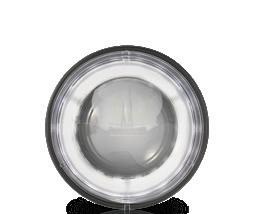




OEM Off-Highway | MARCH/APRIL 2024 23
DRL,
Front Position, Turn Signal, High and Low Beam
forklifts to verify that the shipment will not experience high failure rates in the field. This type of test system is typically less complex because it does not have to measure as many items, nor to the degree of accuracy, as those tested in engineering systems.
2. Regenerative Braking Results in Fuel Economy Improvements
Hybrid or electric vehicles use fourquadrant motor/inverter technology to either assist the engine (hybrid) or as the prime mover (electric vehicle). During deceleration, the system uses regenerative braking, so the electric motor is used to slow the vehicle, and in the process becomes a generator, partially recapturing the energy of motion in the vehicle and restoring it to the battery.
In hybrid systems, the engine is typically shut off and not burning fuel when stopping, slowing down or idling and the electric motor again becomes a generator, partially recouping energy and storing it back in the battery. The engine is switched back to keep the vehicle moving, or to accelerate and the electric motor uses some of the recaptured electrical energy to assists in accelerating while reducing the load on the engine, and therefore reducing fuel consumption.
Since using this recaptured power is the key to the sought after fuel economy improvements, it is essential that the testing program used ensure that the powertrain is making the best use of this regenerative power.
3. Testing Systems Must Be Able to Handle Regenerative Drives, High Voltage Batteries & Multiple MCUs
Testing hybrid and electric vehicles is worlds apart from traditional internal combustion engine testing, which typically measures speed, torque, and a few temperatures, pressures and flows. Very precise control of speed and torque is typically not required in testing internal combustion engines, so dynamometers used for standard
combustion engine testing were never designed to handle the types of precision required by hybrid or electric powertrains, nor can they test the regenerative (motoring) modes of operation.
Modern HEV test systems must provide all of the functionality of traditional systems, with the added ability to test high-power regenerative electrical drives, high voltage battery and charging systems, and communicating with any number of MCUs.
Electrical System Testing
For many larger hybrid/electric drivetrains, such as those used in offroad heavy vehicles, there is a strong trend toward using higher voltage, higher efficiency drive systems. Going from the traditional 12/24-volt DC electric system to one using 240 volts AC will typically require one-eighth or less of the current to deliver the same power. This is more efficient and also requires much smaller/lighter wiring and smaller components to transfer the energy, leading to smaller, lighter, more energy efficient vehicles. Many current designs operate at 1,000 volts or more, making the vehicles even more efficient.
To conduct this type of testing, it is essential to use a 4-quadrant motoring dynamometer, which can simulate/test all modes of operation in a hybrid or electric vehicle. The ability to drive or load in either direction is exactly what is needed to test a system that itself operates in this manner. A standard dynamometer is just not capable of testing the system during braking, when it is in regenerative mode.
Creation of high-efficiency, AC powered systems typically involves the use of three-phase, inverter based technology to precisely control the electric motor(s) in the system. These systems tend to be very efficient, but also generate a great deal of harmonic distortion in the power output. So, in addition to the motoring dynamometer, a modern hybrid/EV test system typically includes a rather sophisticated three-
phase power analyzer. This unit must be specifically designed to accurately measure high-power electrical values with a great deal of harmonic distortion present.
For example, some companies have developed one comprehensive test system for determining the performance, efficiency and durability of all aspects of hybrid drivetrain systems, including electrical assist (parallel hybrid), diesel electric (serial hybrid) and fully-electric vehicle systems.
The system can integrate components of powertrain and electric motor data acquisition and control systems. Coupled with one or more AC dynamometers, and one or more precision power analyzers, the modular system can test individual mechanical and/or electrical components, integrated sub-assemblies and complete drivetrains with a single system.
High-Voltage Battery Simulation & Testing
The high-voltage battery and charging system is a critical element of modern hybrid or electrical vehicles. Accurate high voltage hybrid or electric drivetrain testing requires precise, repeatable high-voltage DC power. Batteries are not acceptable for powering the DC components of a hybrid/EV test system because battery performance changes over time, depending upon charge state, ambient conditions, and age. A standard off-the-shelf power supply will not work, because it cannot absorb power from the regenerative system. In fact, a standard power supply used with a regenerative system may be damaged or destroyed.
This problem can be solved with a solid state battery simulator/test system developed specifically to test highvoltage hybrid vehicle batteries and simulate these batteries in an electric drivetrain environment.
At the heart of the system lies a high-efficiency, line-regenerative DC power source. During regenerative modes, absorbed power is regenerated back to the AC mains instead of being dissipated as waste heat, a customary
MARCH/APRIL 2024 | OEM Off-Highway 24 FEATURE SERIES: POWERTRAINS
practice in previous generation testing systems. This innovative method provides far greater power efficiency and measurably reduces overall operating costs.
Coupled with a a comprehensive test system, the solid state battery simulator/ tester accurately simulates the response of the high-voltage battery in realworld conditions. However, since it is not subject to a variable charge state, it provides repeatable results, test after test. This same unit, when operated as a battery tester, subjects the battery to the same charge/discharge profile as it would encounter in an actual vehicle on an actual road course.
One of the advantages of using the AC dynamometer with a regenerative DC power source is that, when coupled together, the power absorbed by one unit can be re-circulated back to the other unit within the test system. This reduces the power drawn from the AC mains by as much as 85% to 90%, significantly reducing total operation cost. This energy efficient configuration easily pays for itself, often many times over, during the life of the test system. Low maintenance requirements also contribute significantly to lowering operating costs.
4. Communication With Control Modules
Communication with MCUs is another feature that has to be built in to testing systems for hybrid or electric vehicles. Whereas engines used to be controlled primarily by the throttle and ignition, HEV engines have an engine control unit (ECU), as well as a separate MCU to control the electric drive.
The vehicle may also have separate units for controlling the transmission and/or charging systems. These units typically communicate commands and/or data between themselves via a high-speed vehicle networks, for example CAN, LIN, or FlexRay, among others.
The powertrain and electric motor data acquisition and control systems referred to above are designed to integrate all these units into a single,
coordinated test platform that can communicate with these control units simultaneously and efficiently and properly test complex drivetrain configurations.
There is great excitement in the off-road heavy vehicle market over the promise of improved environmental performance of hybrid and electrical
vehicles. To achieve that promise, designers and manufacturers must adopt driveline testing programs that meet the needs of this new and emerging technology.
Randal Beattie is the owner of SAKOR Technologies Inc. Visit sakor.com.


Powerful, Reliable, and Durable Battery packs
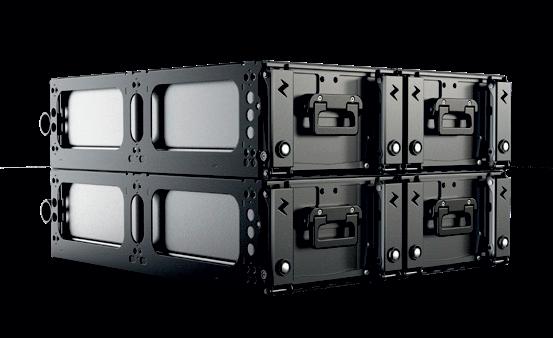

The energy packs from HAWE Mattro are rugged power sources for the electric drivetrain of offhighway machines and for driving the working hydraulics. Due to their extremely high energy density, they offer the best values in runtime and thus range. And they don’t just store energy, but offer much more thanks to their intelligent battery management system (BMS).
HAWE Hydraulik manufactures the highest quality hydraulic components, constructed to minimize space and maximize product durability for the mobile, industrial and oilfield markets.
Partner with HAWE to always have the right solution!
www.HAWE.com | info@haweusa.com | 704-509-1599
OEM Off-Highway | MARCH/APRIL 2024 25
Smart Hydraulics. Easy Business.
and Durable
Efficient
Proficient and Rugged
Telehandler with electric drive
AN ARTIFICIAL FUTURE: What’s Next for Advanced Vehicle Safety Solutions?
The challenges of AI in onboard camera systems, object detection & risk reduction
by Mike Hardman
For years, artificial intelligence (AI) has been cited as the answer for a more advanced and streamlined experience that touches every aspect of how humans live and work. Now, in the age of “big data,” the application of AI is fast becoming something that many industries are using in abundance, including the improvement of road and worksite safety.
Five years ago, 360-degree bird’s-eye view cameras were the latest innovation. Now, this concept has been upgraded with AI technology that can recognize people and provide an active warning. Meanwhile, radar detection technology has moved from 24Ghz to 77Ghz, giving a more accurate, faster detection at a greater range. Moving even further still, the latest version can analyze the track of vulnerable road users and provide warnings only when there is a risk of a collision, therefore eliminating irrelevant warnings for objects and improving safety parameters.
However, there are still many challenges to using AI in vehicle safety devices. One of the keys to successful AI application is demystifying what this really means for end users. There are questions to AI’s learning and thinking capabilities and wariness that this could cause potential danger
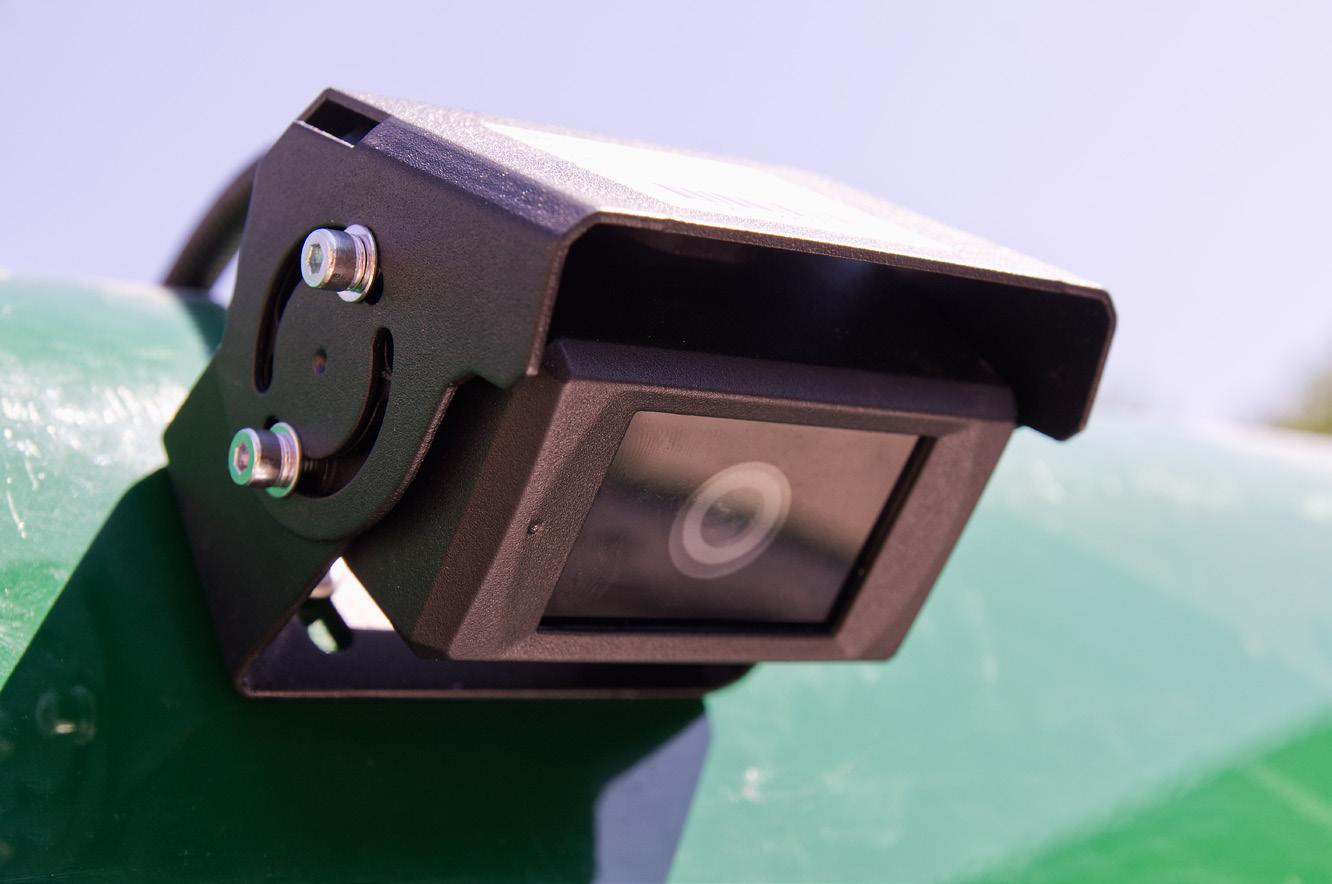
to humans on roads or worksites. In automotive technology, meticulously validated data sources are being applied through machine learning, primarily used for image detection. The AI for vehicle electronics, which is “pretrained’ before install, is programmed to operate in a specific way. For example, AI is programmed to detect particular situations or vulnerable road users, such as pedestrians or cyclists, and therefore cannot begin to develop a life of its own and make decisions for itself — a common misconception. To overcome misconceptions such as this, consider the following.
1. How can AI improve road & worksite safety?
AI has enormous potential to improve safety on roads and worksites, but it is dependent on pre-learned scenarios
and precision. It draws on its data sources and makes a detection decision based on this information, so any AI used in automotive technology must use validated data sources. With this, there are secure, pre-trained and programmable actions defined in a specific way. For example, a camera will have been programmed to respond in a certain way if a cyclist veers in front of a vehicle. This pre-programming means it will make the same decision every time, without exception, because it is a predetermined pattern. This eliminates detection decision-making, which could potentially lead to catastrophic outcomes. The machine is not defined by emotion, but by a pre-defined pattern, so it’s more decisive. When it needs updating, the current algorithm can be changed for a new and more refined version.
CAMERA SYSTEMS MARCH/APRIL 2024 | OEM Off-Highway 26
ELECTRONICS INC.
BRIGADE
2. Are there concerns about how much AI is taking over?
In the vehicle safety industry, AI should be able to avert for potential collisions across driver assistance systems, self-driving vehicles, intelligent traffic management systems, etc., all based on data-driven decisionmaking. The potential for safer roads is huge. Currently, AI is being used as a supportive system and, provided the checks are in place, it is a reliable method of enhancing safety, which is a positive step forward. In this industry, there would be much more concern if products came to market that had not been tested exhaustively.
3. Can AI fail or get things wrong?
In the vehicle safety market, this is arguably one of the biggest concerns. We’ve all read about chatbots giving misleading, legally questionable, and even potentially dangerous advice to people because the bot has collated its response from random or non-validated sources. AI training is similar to human learning — the information on which it bases its response has to be credible and true. If it isn’t, then issues can arise. It is essential that AI be tested in the real world because there will always be new situations not yet envisaged. One example of this is a site worker in a high-visibility vest. If the AI is not trained effectively, the glare from the vest can create a halo effect and it will be impossible to guarantee detection. There are also cases in which sunlight wipes out an image, bringing a visionbased AI system to its limit. These issues are being improved alongside the advancements in camera technologies, as well as fusion with other sensor technologies, e.g., radar. Overall, the better the information provided to an AI system, the more you can get out of it.
4. What are the benefits of AI road safety systems?
Traditional detection systems measure physical dimensions, but don’t classify what something actually is. They measure it and draw a conclusion as
a result. With AI, there is an ability to classify an object, such as a cyclist, pedestrian, moving car or safety barrier. Humans may respond randomly to sudden incidents; however, a machine will always come up with a predefined reaction that is often safer — but it depends on the intensity of its training.
And if something goes wrong, there will always be the issue of liability. Is an incident the responsibility of the driver, the manufacturer, the AI training material, a combination of the three — or none of these? In my opinion, at the moment, the best compromise for an application is a combination of AI and both image data and traditional radar detection technology, but this may change with AI advancements and, furthermore, with the addition of a third sensor technology.
In investigating the use of AI and whether it can enhance road and workplace safety further, a camera that can detect pedestrians using AI with state-of-the-art machine learning was first up, using AI to accurately evaluate received images in cameras fitted to vehicles and calculate when nearby people or objects became critical. Its success inspired expanded research into AI safety devices.
The latest cameras have larger detection areas, recognize humans using AI, and warn the driver of a vehicle visibly and/or audibly about a possible hazard. The system has a high-definition (HD) or higher-resolution vison sensor with all processing power embedded into the camera assembly, and the detection range stretches from the front of the vehicle to several meters out. The camera’s computer uses machine learning to improve detection rates continually via a thoroughly tested state-of-the-art algorithm.
Engineers have spent long hours to ensure these systems can cope with any situation in the shortest possible reaction time. And it’s not just a question of identifying a human; every practicable scenario has been tested. The human in question could be 6 feet, 4 inches tall or a child at 3 feet fall. They
could be standing, running, wearing a large hat, operating a forklift, pushing a wheelbarrow, sitting down, riding a bike — initial adjustments were even included to allow for a human lying down. Another scenario, training AI to recognize speed differentials and track objects, can identify the position of a cyclist versus another vehicle in relation to movement.
5. Are AI advancements coming?
Over the years, technology has progressed from the early days of vehicles providing warnings, such as low-fuel indicator lights, to the active assistance of today’s detection cameras. Cameras can currently help drivers stay in the correct lane on a highway, detect vulnerable road users, and warn us of activity in blind spots. Fully automated cars are already becoming a reality — this market will be one to watch. Further advancements in AI are inevitable, but if they continue to prevent death and injury on roads and worksites, then we must do everything we can to channel them securely and responsibly.
It’s important to remain aware of the operator workload that these new systems may present.
It’s also crucial for technology partners to work together to package multiple sources of information, both active detection technologies alongside passive technologies, into one display. The active elements will draw the attention of the operator, providing visible or audible warnings, while the passive elements provide an immediate overview of the situation.
Another area now gaining traction is sensor fusion technology. Teams working with OEMs on combining different technologies, such as cameras and radar, can provide a more holistic coverage that any one system can achieve alone.
Mike Hardman is the engineering and technical services manager at Brigade Electronics Inc. Visit brigadeelectronics.com.
OEM Off-Highway | MARCH/APRIL 2024 27

CYBERSECURITY CHALLENGES
for Connected Off-Highway Vehicles
Exploring the trends, risks & regulatory environments in both on- & off-highway connectivity
by Gabriel Byman & Elisabeth Waitz
As connected mobility becomes a reality, so too do the dangers posed by cybersecurity threats to autonomous driving and softwaredefined mobility. Threats posed by hacking, malicious software and unauthorized access require constant vigilance from software product and service providers. Just as with passenger vehicles, a substantial percentage of all off-highway vehicles (OHVs) will be connected — many already are. While OHV connectivity can provide many benefits, it also makes the vehicles vulnerable to the same cybersecurity attacks faced by on-highway private and commercial vehicles.
Hackers & Threats
Wireless connections provide opportunities for vehicle attacks. Connected interfaces are a potential path of attack for denial of service attempts, remote hacking or malware injection via connected interfaces. These
threats can impact system functionality, road use safety or data with privacy attributes that are necessary to comply with legal data protection restrictions.
While OTA software updates provide a potential entry point for a hacker, they are, more significantly, an important countermeasure to react to vulnerabilities and threats. Therefore, the vast majority of all OHVs will be connected, due to the many benefits connectivity provides.
Automation is already more advanced in OHVs than automated driving is in onroad passenger or commercial vehicles because the operating environment in which they are operating is usually an easier, more controllable space. For example, an autonomous tractor could be serving a well-defined space limited by GPS coordinates, such as a field that needs plowing. The operational environment is less complex because there are fewer participants, less traffic and fewer unforeseeable or unexpected obstacles and changes to the environment.
Nevertheless, these vehicles usually operate in a publicly accessible area. Just as in the case of any other vehicle, cybersecurity concerns are real and potentially extremely dangerous as they can impact the safety of on- and off-road users.
Cybersecurity Legislation
OHV OEMs approach cybersecurity differently than conventional vehicle manufacturers. In Europe, rather than adhering to the United Nations’ (UN) cybersecurity regulations, OEMs will be required to follow the Cyber Resilience Act (CRA) or other applicable local regulations.
In the European Union (EU), the CRA has created a legal framework describing cybersecurity requirements for hardware and software products with digital elements including on- and offroad commercial vehicles, but excluding vehicles covered by UN regulation R155. In December 2023, the CRA was agreed to in principle by the EU and will be formally approved in 2024, coming into force over a phased transition period commencing from the end of 2025. Meanwhile in 2023, the U.S. introduced the Cyber Trust Mark, a voluntary cybersecurity certification and labeling program for connected devices and other U.S. executive orders
Fundamental Differences
A key difference between on- and off-highway vehicles in terms of cybersecurity is the number of potentially impacted vehicles in case of a security incident. Production runs of OHVs are generally smaller.
MARCH/APRIL 2024 | OEM Off-Highway 28 TECH & IOT
ELEKTROBIT
While the size of a fleet for one model of on-road vehicles can easily exceed 150,000 vehicles in one region, typical tractor fleet sizes, for example, may range between 100 to 10,000 vehicles per region. By implication, a security breach of a road vehicle could affect more vehicles than an off-highway vehicle. Another difference might be the motivation and execution of an attack. An attack targeted at on-road vehicles often applies to the whole fleet, i.e., a potentially high number of vehicles, to threaten or blackmail users or OEMs of the individual vehicles. Agricultural machines and tractors, on the other hand, are far more expensive and therefore a popular target for theft (versus blackmail or threats).
Nevertheless, to build secure systems, the off-highway sector must consider fundamental security principles and best practices common to both on-road vehicles and OHVs. It is vital to maintain security over the entire vehicle life cycle. With connected vehicles, security measures cannot guarantee to prevent attacks completely and must accept that attacks to the vehicles are possible and will happen. Cybersecurity must address vehicle protection not only by hardening systems, but also by detecting ongoing attacks or threats. New threats can also arise due to advances in technology or new publicly known vulnerabilities. As a result, OEMs and operators must continuously monitor the industry, vehicle systems and events happening in its environment, and analyze accordingly. Furthermore, they need to be able to respond to incidents or new threats. Typically, this could entail disabling vulnerable functions or interfaces, adopting new or modifying existing security policies, deploying software updates or patches, or revoking and updating certificates.
A Layered Approach
To achieve end-to-end security, a layered approach to the vehicle’s architecture is necessary. Vehicles are connected and managed by backends, the cloud and infrastructure. Therefore, security also
needs to consider this infrastructure, which includes vehicle operation centers with key management, fleet management and life cycle management. Connected vehicles communicate via external interfaces to protect themselves from attacks against their external communication channels, employing such countermeasures as firewalls, intrusion detection systems or secure communication channels. The protection of sensitive data must be considered from end to end so this kind of data is never communicated in plain text via an external interface.
The next layer to consider is the invehicle network. Its segmentation can isolate safety-critical functionality from a less critical subnetwork that is more exposed to outside attacks. In-vehicle communication can be protected by using secure protocols with an intrusion detection system monitoring its network communication.
The last security layer to be considered is protecting the electronic control units. Security countermeasures, such as secure boot, secure software update, authentication for secure diagnostics, isolation of different partitions, data protection and encryption, and operating system hardening, round out the package of vehicle security concepts.
Ultimately, highly all connected OHVs are vulnerable to cybersecurity attacks. While fundamental principles of cybersecurity best practices apply to both categories, significant differences continue to exist between on- and offhighway and vehicles relative to security risks, the potential impact of an attack and regulatory aspects. Reaching the goal of secure vehicles is only possible by addressing the whole life cycle of the vehicles’ systems and considering each layer of the system architecture.
Gabriel Byman is senior product manager, cybersecurity, and Elisabeth Waitz is senior expert, cybersecurity, at Elektrobit. Visit elektrobit.com.

OEM Off-Highway | MARCH/APRIL 2024 29
OPERATOR COCKPIT DESIGNS Impact End-User Efficiency
From comfort and ergonomics to cutting-edge technology, the cab is becoming a key differentiator
by Dominique Burkard
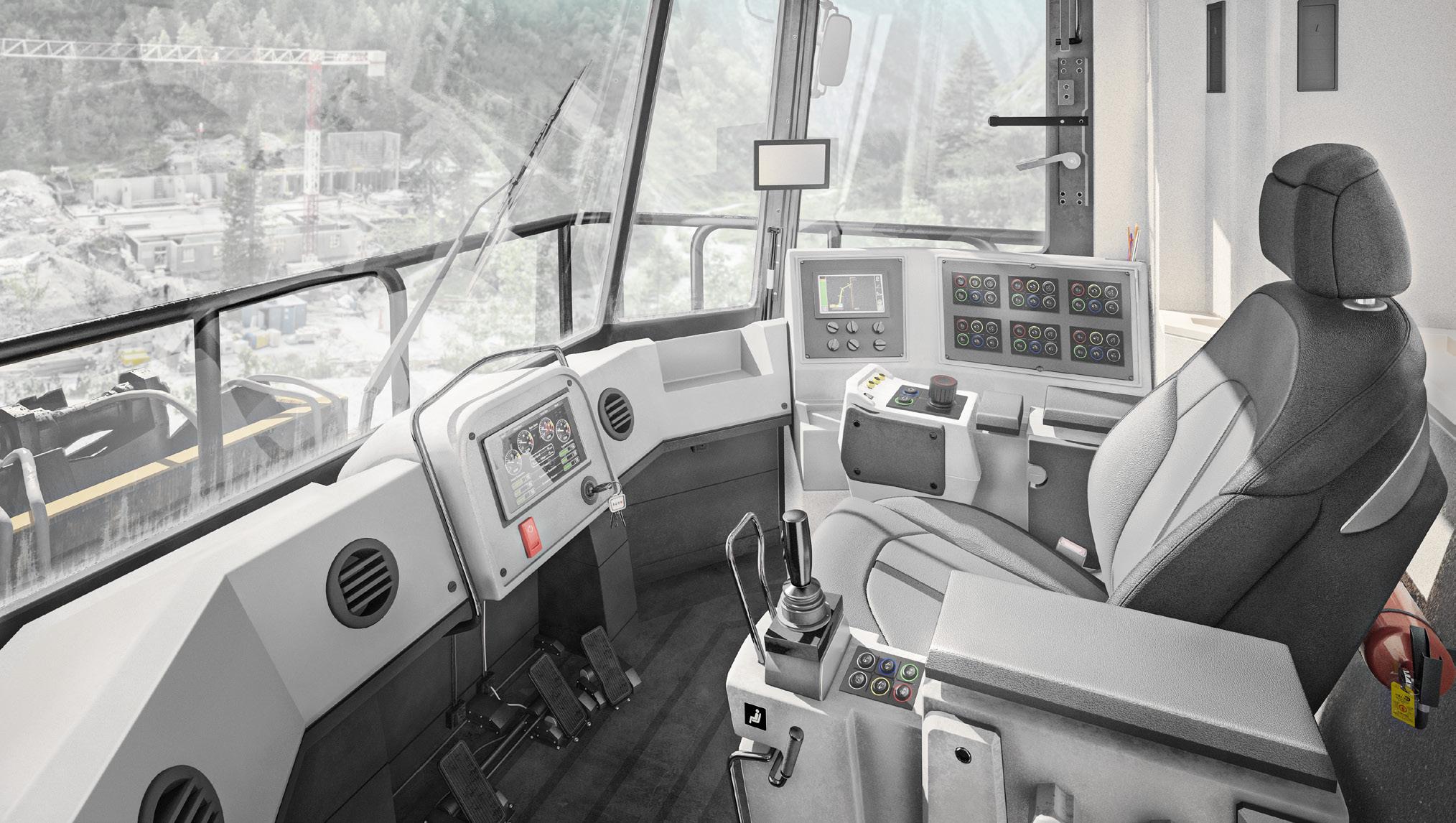
In recent years, the design of cabs has become an important factor in the success and operability of vehicles in various industries — especially in the heavy-duty and specialty vehicle market. With the advent of new technologies, changing customer needs, regulatory change management, and stricter safety standards, the design of cabs and the impact of proper Human Machine Interface (HMI) selection, have evolved significantly. From comfort and ergonomics to cutting-edge technology, the cab is becoming a key differentiator in the off-road vehicle market.
Modern cabs are designed to maximize operator comfort while improving work efficiency. Ergonomic seats, adjustable steering wheels, and well-placed
multifunctional controls are just a few examples of features that aim to reduce strain on the driver or operator, minimize the risk of accidents, expand output and improve performance.
Comfort & Ergonomics
An important aspect of off-road cab design is the seamless integration of comfort and functionality. In the past, cabs were often considered simple and uncomfortable. This is now changing. Manufacturers are increasingly investing in the development of seats that offer maximum comfort. Adjustable steering wheels, functional armrests, heated seats, and air conditioning are now standard features in many off-road vehicles. Modern cabs mimic automotive designs
by focusing on similar features and functionality that improve the driving and operating experience. Comfortable interiors include numerous storage options for personal items, cup holders, and practical sockets for charging electronic devices. These options make the operator’s workplace more efficient and more pleasant. Modern cabs like those found in agricultural equipment are hardly inferior to automotive applications. They sometimes even offer greater efficiency with the use of displays, functional armrests, and intelligent switching and rotating elements.
Functional Safety
Increasing connectivity and integration also requires a smooth and safe operation.
TRENDS IN THE CAB MARCH/APRIL 2024 | OEM Off-Highway 30
Modern Cockpit with well-positioned multifunctional controls
EAO
Functional safety reduces unacceptable risks caused by random electronic system errors to an acceptable level. The risks in question may cause injury to people, rather than damage to property. Functional safety means applying and observing certain standards to ensure that the correct operation of safety functions is monitored. In the event of an error, the system will respond and switch the application to a safe state — for example, by stopping it or by alerting the user.
Traditional mechanisms are increasingly being replaced by smart electronics. In heavy-duty and specialty vehicles, smart solutions are replacing mechanical actuators and indicators. Controller Area Network (CAN) bus systems can connect more than 100 bus participants and send data and information across shared cables. This approach reduces the number of wiring harnesses as well as the associated weight — and subsequent cost. At the same time, these data buses also expand vehicles’ technical capabilities to the benefit of their users and operators. The downside is that the increasing complexity of these electronics can cause new types of malfunctions. These instances can potentially result in devastating consequences when safety components are affected. This is where functional safety comes in. Not only can highly complex applications benefit from this, but also simple or seemingly noncritical ones such as window openers or light switches.
Individualization & Personalization
In addition to the seat and climate settings, customer-specific configurations of HMI applications are increasingly becoming a key requirement. HMIs can be adapted to specific applications for unique controls, end-user efficiency, and user-friendly interaction. For example, an HMI system can be designed to control and monitor a specific machine. Its interface is tasked with managing and displaying data relevant to that function and its performance. Additional customization of HMI interfaces can also allow for multi-functionality which supports the ability to control multiple machines from a single interface.
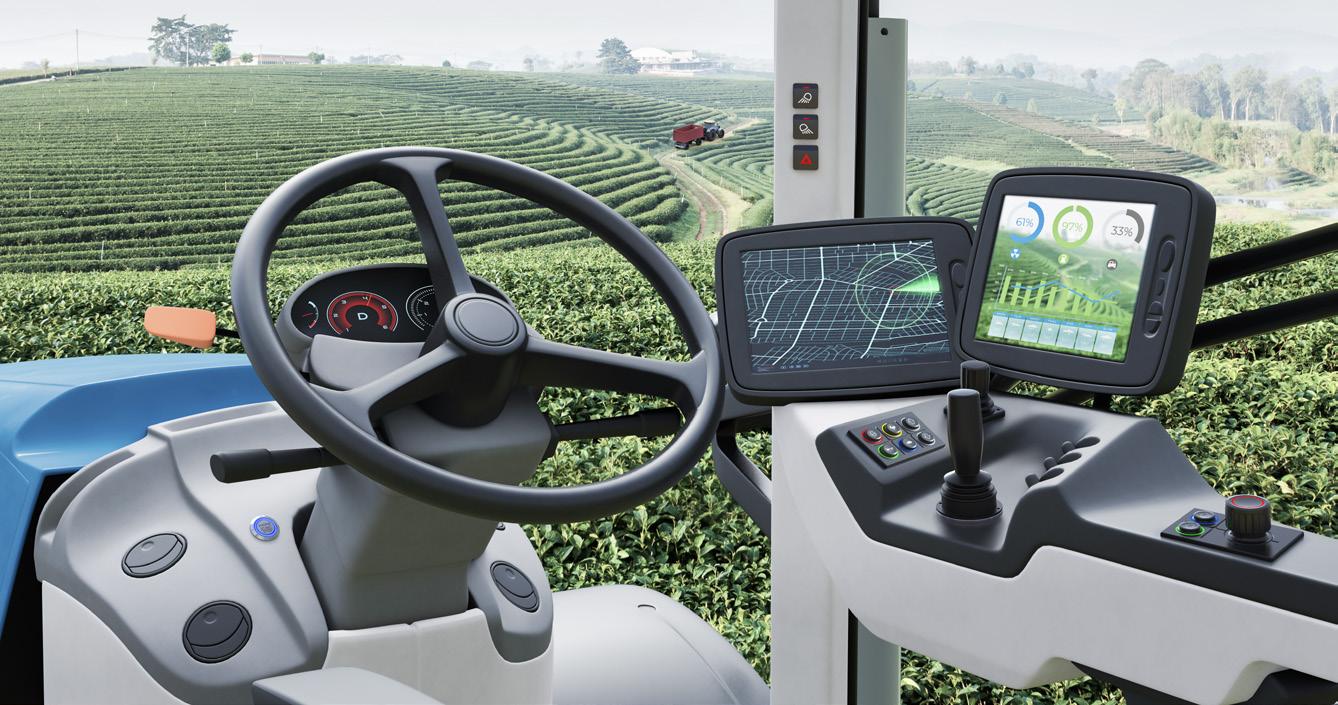
Sustainability
Given the growing importance of environmental awareness and sustainability, manufacturers of off-road vehicles are also increasingly focusing on environmentally friendly solutions in their cabins. Common practice includes the design-in and use of recyclable materials, energy-efficient HVAC systems, and the integration of hybrid or electric drives. These measures are intended not only to reduce the environmental impact of the vehicles, but also to raise customer awareness with sustainability. Controls and modules must be rugged and durable for long operational life cycles. But when required, components that are subject to high wear and tear to extend product life cycles should be used as replacements. This will reduce the environmental impact and act as an effective approach to manage sustainable consumption.
Future Outlook
While current market trends in the design of off-road cabs and HMIs are impressive, manufacturers also face several challenges and future developments. Stricter emissions regulations require increased use of environmentally friendly powertrains. Increasing competition from new entrants in the electromobility market are also shifting developments that impact the use of emerging technologies.
In addition, manufacturers must continue to drive innovation to meet the ever-changing needs and
expectations of users. Despite these challenges, the one constant is that future designs of off-road cabs are full of exciting possibilities. Cab designs will continue to evolve by balancing new and innovative developments with usability. Autonomous vehicles will place new demands on the cab design and the function of operator controls. Cabins could evolve into multifunctional workspaces that maximize occupant comfort and productivity. In addition, advanced technologies such as augmented-reality displays and biometric sensors could play an even greater role in the future to further improve vehicle safety and efficiency.
Conclusion
Cab designs and HMIs have become a crucial aspect of vehicle development that plays a key role in determining success in the market. Through the integration of technology, consideration of safety and ergonomic standards, individualization of comfort options, and pursuit of sustainability and efficiency, manufacturers are designing cabs that meet the requirements of modern mobility. Looking to the future, it’s clear that further innovative solutions will pave the way for the cabs of tomorrow.
Dominique Burkard is principal industrialand UX-design manager at EAO.
OEM Off-Highway | MARCH/APRIL 2024 31
Visit eao.com.
EAO
Future Cockpit with mixed technology and multifunctional HMIs
Programmable Encoders (POSITAL)
The IXARC programmable incremental rotary encoders can now be configured to deliver fractional pulse rates (fractional PPR). The device can be programmed to transmit a single pulse for more than one shaft revolution (for example, a PPR of 0.125 would correspond to one signal pulse for eight shaft rotations). They can also be set up to deliver pulse rates that are not even multiples of the number rotations (a PPR of 3.5 would correspond to seven pulses for two rotations). With a wide variety of mechanical options available, including shaft type and diameter, flange and casing types, materials and level of environmental protection, IXARC encoders can fit into almost any system. A feature of these encoders is their programmability. Key performance characteristics can be selected by setting software parameters without mechanical changes. Fractional pulse rates can be set anywhere from 0.125 PPR to 8 PPR in steps of 0.125 PPR. Communications interfaces are programmable, with push-pull (HTL) or RS422 (TTL) outputs available. Connector pin-outs can be arranged to match other products, such as the Photocraft units. oemoh.co/uc0z3tyi



Rugged Push-Button HMIs (EAO)
The rugged Series 82 family of push-button HMIs now includes devices with enhanced vibration resistant cabling and R118 certification. The new cabled versions of EAO’s Series 82 push-button switches are available with a choice of a 200 mm straight or 90-degree offset cable. The cable version with tin-plated cable though offers R118 certification, vibrationresistant cable connections and rear sealing. Variants with the 90-degree offset cable exit point are particularly useful in low-depth back panels. The cable version with M12 connector is robust and easy to mount and targets demanding machinery applications. All the new devices feature rear over-molding and IP67 protection as standard while SUS 316L stainless steel casing and enhanced vibrationresistance are available options. oemoh.co/9vucb91f
M14 & M18 Speed Sensors (RHEINTACHO)
The new two-channel differential Hall sensors in sizes M14 and M18 detect the speed and direction of rotation of gears with high resolution and a particularly wide frequency range of 0 kHz to 20 kHz. With protection class IP67, media resistance to a wide range of hydraulic oils and operating temperatures from -40 to +125 degrees Celsius, they are suitable for flexible use under the most adverse environmental conditions in vehicles and mobile machinery, as well as test benches. Both sensors have push-pull output stages for uncomplicated integration into the control system.
oemoh.co/50fci3g2


ZQuip Modular Battery System (Moog Construction)
The ZQuip modular energy solution converts diesel-powered construction fleets into zero-emissions machines that create all-electric jobsites. The ZQuip energy kit includes: 70- and 140-kWh Energy Modules, which are interchangeable across all machines; A conversion kit consisting of a battery harness, electric motor and AI thermal management; IoT and connectivity to monitor a fleet’s activities and battery-life while eliminating range anxiety and ensuring the highest level of uptime. ZQuip modules are interchangeable across any machine regardless of size, type, or manufacturer. ZQuip’s onboard AI Thermal Management technology provides alerts well before the point when actual energy outstrips what is planned. oemoh.co/6pot3id7
NEW PRODUCTS MARCH/APRIL 2024 | OEM Off-Highway 32
Remtron PatriotPro Industrial Remote Control System (Cattron)
The PatriotPro operator control unit is available in standard configurations and can be engineered to meet specific application requirements. The transmitter can support up to 18 commands with an engineered system. New systems work with the CBMCU, 10R/17R or 11R receivers. PatriotPro transmitters are also backward compatible with Remtron’s existing Patriot and CommandPro systems, providing a path for upgrading existing systems. Features include: Distinctive click-click indication between steps; Illuminated PL-d stop switch; Wireless closed box Bluetooth configuration for the deployment of spares; Logging of essential data and diagnostics; Signals are secured with black channel communication protocol; Private label options for OEMs and select distributors; CattronLink wireless programming tool for system updates; Up to a 600-foot operating range. oemoh.co/1bvab4gq

Series 5000 Operator System (Spartan Scientific)

The Series 5000 Operator System is designed to meet the demands of applications requiring higher pressures and increased flow rates. Featuring a range of orifice sizes from 0.6mm to 4.0mm, available in both two-way and three-way configurations, the Series 5000 offers versatility to suit a wide range of industrial fluid applications. With options including DIN spaded or flying lead coils, and a future provision for a 12mm connection option, the system provides flexibility and ease of integration into existing setups. Constructed with all stainless-steel tubes and multiple seal materials, the Series 5000 is engineered for durability and reliability in demanding environments. oemoh.co/2y6axz9e
FLEX-MAT App-Controlled Sensor (MAJOR)
The FLEX-MAT Sensor is a vibration data measurement tool used to review results and fine-tune screen machines without shutting down the equipment. The app-controlled vibration analysis sensor enables readings of screen box vibrations within seconds and generates a report that can be sent or reviewed. The simplicity of the system’s design ensures valuable and actionable data without the requirement for a plant shutdown to calibrate the sensor. The sensor measures g-force, stroke, rpm and orbit, including lateral movement. The sensor kit includes one sensor, instructions, a USB charging cable and instructions on how to download the MAJOR app, available for iOS and Android. oemoh.co/zv01l2nc
AntaRx-Si3 Inertial GNSS Smart Antenna (Septentrio)
The AntaRx-Si3 is the first GNSS/INS (inertial navigation system) Smart Antenna on the market in an ultra-rugged enclosure, designed for easy installation on machines such as agriculture robots. AntaRx-Si3 receivers leverage FUSE+, which is designed to answer the need for position availability in tough industrial environments where GNSS signal reception may be temporarily compromised. The IMU sensor in FUSE+ also improves positioning integrity and reliability, which is critical for autonomous systems. The AntaRx-Si3 is designed to be mounted outside on a machine for operation in harsh environments out in the field. Enclosed in an impact resistant polycarbonate IP69K housing it can handle high levels of shocks and vibrations. This multifrequency receiver delivers high-accuracy RTK positioning down to the centimeter level. AntaRx-Si3 has a built-in 4G cell modem, so there is no need for additional modem integration to acquire high-accuracy corrections. oemoh.co/x8ape1gj

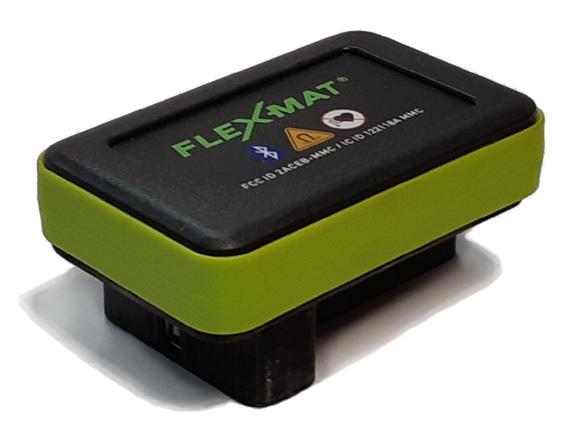

www.enmco.com ELECTRONICS LCD HOUR METER/COUNTER COMBO HOURMETER COUNTER T39 MADE IN THE U.S.A e-mail: customerservice@enmco.com TOLL FREE 888-372-0465 OEM Off-Highway | MARCH/APRIL 2024 33
AN ELEVATING GRADER’S CONVEYOR
Inside Stroud Road Machinery Company’s 1931 conveyor design components & complications
by Thomas Berry
HISTORICAL

Working from a sales training manual published by Stroud Road Machinery Company of Omaha, Nebraska, in 1931, let’s begin a detailed look at elevating graders.
An elevating grader’s digging and loading assembly, consisting of the plow, conveyor and related components, could weigh 2 or 3 tons, and it bore tremendous load strain for 10 hours or more a day, six days a week. The elevating grader’s frame had to be both strong and somewhat flexible, and it had to have ample clearance above the conveyor belt while allowing the operator a good view of the work.
Dirt had to be cast far enough from the cut to enter a hauler being loaded, or windrowed clear of the grader. The conveyor’s length had more bearing than its speed on the cast, and could be ordered in longer or shorter lengths depending on need. Longer conveyors required counterweights. An extension chute could be used instead of a longer conveyor, but Stroud found it inferior
to length. The conveyor rollers were wooden cylinders. But they were prone to “weather-checking,” or splitting in extremes of high and low humidity. The roller could still be used unless the crack was severe, but could crack even when brand new. This was considered a normal operating expense, except by finicky customers who made warranty claims that Stroud usually could not honor because the roller had no demonstrable flaws.
Stroud put metal bands on the ends of its rollers to avoid cracking, but they fell off if the wood shrank. Steel rollers were tried unsuccessfully, and the
apparent solution was rollers made of extra select air-dried gumwood, with self-aligning pins and clampedon end caps in place of bands.
The conveyor belt could handle up to a couple hundred-thousand cubic yards of good material before wearing out. Abrasive materials were rough on it, and rocks and large unbroken chunks would also accelerate wear by riding up it and rolling back down repeatedly. More often than wearing out, the belt could be damaged by snags and tears from jammed rocks, and this was another assumed operating expense. The belt needed to be kept at proper tension for most efficient operation. There were different ways of doing this. Stroud considered the most effective to be set screws on the upper (drive) drum, while moving the base of the conveyor accordingly. If the belt had stretched beyond the range of these adjustments, either it had to be shortened or its frame extended.
Spillage from the conveyor needed to be cleared from its base to prevent clogs and damage. Again, there were various approaches to this; Stroud chose a mechanism operated by lever from the operator’s platform. A competitor, the Austin Machinery Company, used an auger that tended to clog, freeze up or wear through its plating and damage the belt; but customers accepted it, and Stroud derided the design by saying, “a man buying an Austin machine is very frequently buying a cathole cleaner and not an elevating grader.”
Interestingly, similar clogging problems plagued the much larger Euclid BV series belt loaders that rendered these elevating graders obsolete.
Thomas Berry is an archivist and editor with the Historical Construction Equipment Association (HCEA). HCEA is a 501(c)3 nonprofit organization dedicated to preserving the history of the construction, dredging and surface mining equipment industries. With over 3,500 members in a dozen countries, its activities include operation of the National Equipment Museum and archives in Bowling Green, Ohio; publication of a quarterly magazine Equipment Echoes, from which this text is adapted, and hosting an annual working exhibition of restored construction equipment. Individual memberships are $45 within the USA and Canada, and $65 elsewhere. HCEA’s next International Convention and Old Equipment Exhibition will be held Aug. 5-8, 2024, in Canandaigua, New York. HCEA seeks to develop relationships in the equipment manufacturing industry, and offers a college scholarship for engineering students. Information is available at hcea.net, or by calling 419-352-5616 or emailing info@hcea.net.
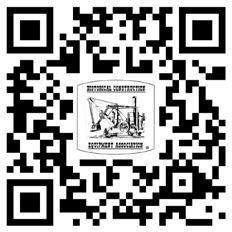
MARCH/APRIL 2024 | OEM Off-Highway 34 OFF-HIGHWAY HEROES
CONSTRUCTION EQUIPMENT ASSOCIATION

DISCOVER THE LATEST MINING EQUIPMENT AND TECHNOLOGY.
MINExpo INTERNATIONAL 2024 is coming back to Las Vegas! At the world’s largest global mining event, you will uncover new products and transformative technology that can help you increase productivity and safety. Massive machinery. Innovative solutions. Essential resources. Every element from exploration, planning and processing to safety, sustainability and reclamation is here
Learn more at MINExpo.com.
